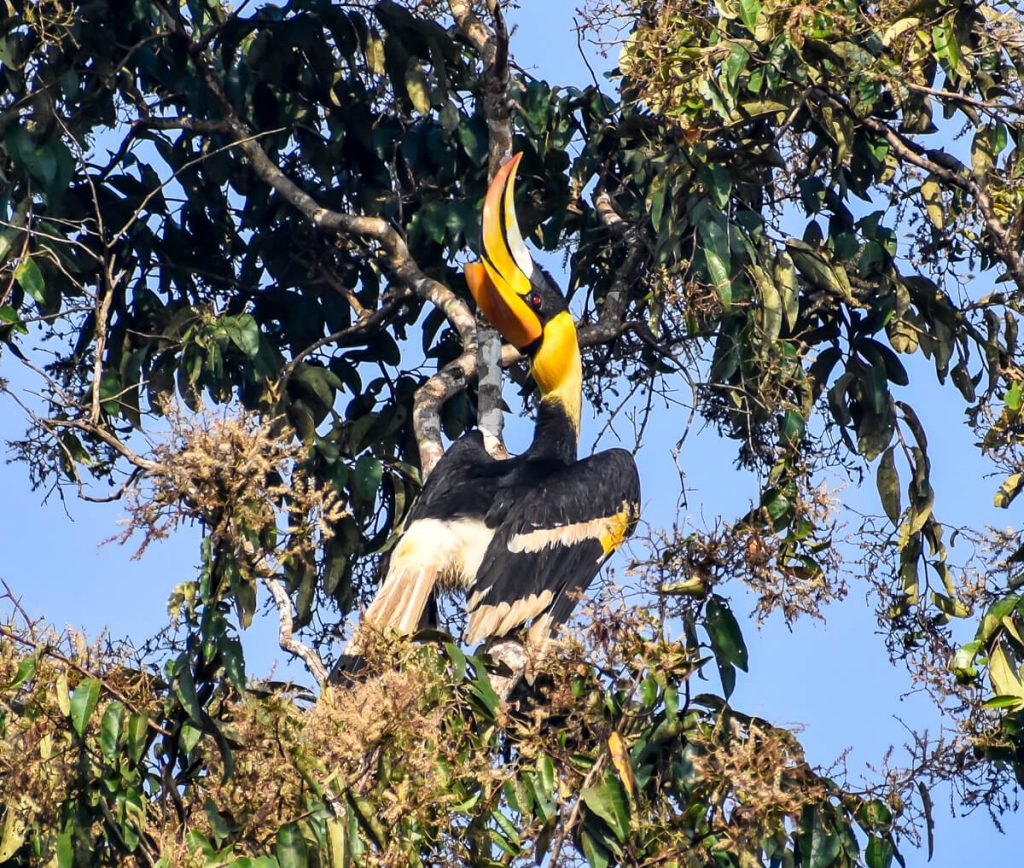Timeless (And Best) Places to Visit in Karnataka India And All About the State — From a Local
I have spent six years (if not more) in Karnataka, spanning over a decade. And finally I’ve moved out (for the unempteenth time) to have a life on the road.
It seems yesterday when I had gone to Bangalore to work at a software company. Ten years ago, I wasn’t going to Karnataka. I was moving to Bangalore, the capital of the state and the software hub of India. This crowded city of Bangalore seemed like a state of its own. My local Kannada friends told me the city wasn’t so jammed and hotch-potched in their young days. They grew up cycling under the canopy of trees, taking the local bus, and spending time in parks.
Since Bengaluru became the Silicon Valley of India, millions of employees and employers came to the city with their families. As the city wasn’t planned by any civic planner, it expanded in every direction in an unruly manner. Concomitantly, the infrastructure got so bad that everyone living in Bangalore wanted to go out to the places to visit in Karnataka rather than staying within the busy city.
But today I’m not here for Bangalore. Today I want to tell the story of Karnataka — the state of the jungles, so let me get to that quickly.
Table of Content For Best Visiting Places in Karnataka Guide
- About Karnataka
- Best Places in Karnataka
- Languages in Karnataka
- Best Time for Traveling to Places of Karnataka
- Food of Karnataka
- Best Transport Mode for Places to See in Karnataka
- Travel Safety in Karnataka
- All Karnataka Travel Articles
About The State of Karnataka India and Its History
As the history of Karnataka goes back to the Neolithic age, I possibly can’t get into it in detail.
But here is a little summary. Karnataka was ruled over by a series of kings, including the Mauryas, Chalukyas, Rashtrakutas, Cholas, and the Vijayanagar empire. From the Vijayanagara Empire, the rule of the Mysore kingdom (the present Karnataka) was passed to Tipu Sultan. In the last of the four Anglo-Mysore wars, Tipu Sultan, lovingly known as the Tiger of Mysore, lost to the British and the state came under the colonists.
After India’s independence, all the primary Kannada regions were combined to form the state of Mysore on 1 November 1956. But Mysore was renamed Karnataka in 1973 as a lot of people thought Mysore didn’t represent the new regions that were added during the state formation.
Karnataka has the Arabian Sea on the west. Its border touches all five states – Maharashtra to the north, Telangana to the northeast, Andhra Pradesh to the east, Tamil Nadu to the southeast, and Kerala to the south.
About twenty-two percent of Karnataka is under forest (forming 6% of India’s total forest). In this state, tigers and leopards roam free. Mountains and hills fill the Western boundaries of Karnataka. Here relics two thousand years old are still being excavated. In Karnataka, one can see sloth bears licking honey off rocks and fury Malabar squirrels clutching onto trees with sharp claws. Peacocks dance uninhibited and flying foxes flying together form a black duvet over our heads.
Karnataka jungles are deliciously deciduous, evergreen, and thorny. The forest is dense with snakes and elephants. Some national reserves are so thick they never let any sunlight in. The soulful dance of the soulmate hornbills in the sand and soil is known to all. Rivers and lakes are abundant. Waterfalls lie tucked amongst high hills and forests. Villages are dispersed in between these jungles. Sometimes there is a road, and some days one has to walk on foot.
About 61 percent of Karnataka lives in rural areas. Thus a lot of inhabited regions are still remote and unreachable. People do farming, mining, and manufacturing. Then there are industries, textile, automobile, software jobs, and Karnataka tourism has been seeing a boom for years now.
Karnataka is an interesting state which (even after ten years) I have just started to understand.
A piece on Karnataka wildlife is coming up soon.
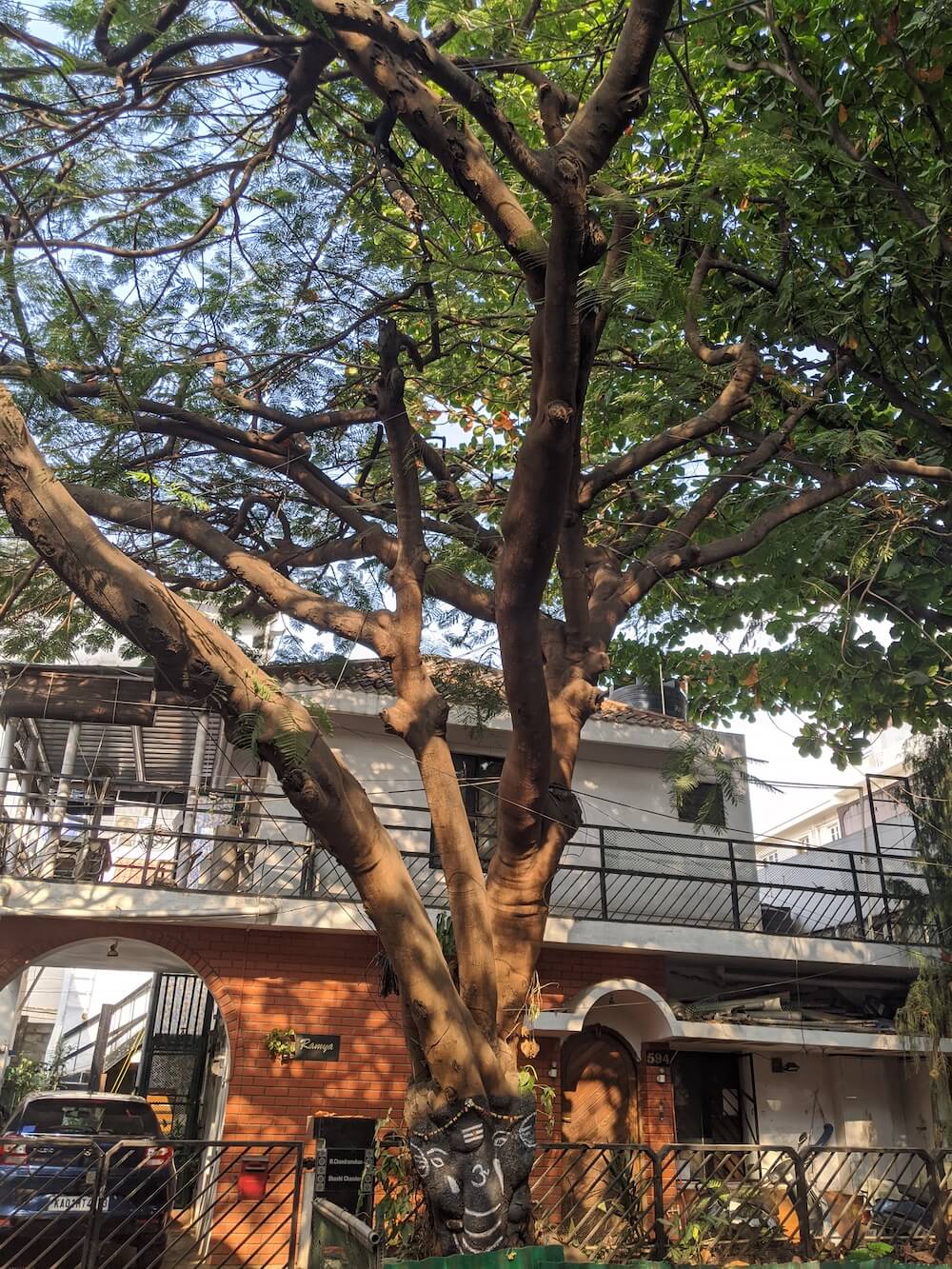
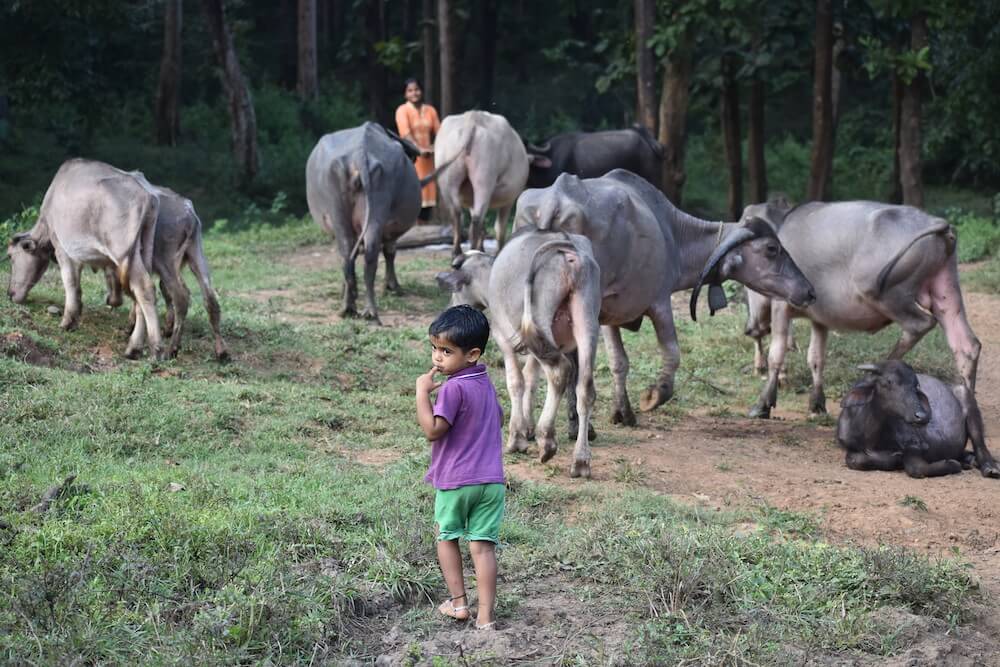
Some of The Most Culturally-Intriguing and Beautiful Places in Karnataka
The only reason I don’t already have a house in Karnataka is that I still haven’t learned Kannada. Otherwise, I proudly tell everyone I love the state. How can one not admire such a gorgeous and rich place where you have a new experience at every turn? Traveling in Karnataka is almost like being in a new country.
The list of Karnataka tourism places is endless. From deep-blue beaches, unseen forests, to temples and monuments recently discovered, Karnataka is dense with interesting destinations to rejuvenate a traveler physically, spiritually, and emotionally. If only one is open to experiences.
(On a side note: I was just almost treated away from my writing spot in the pine forest here in a village Chindi in Himachal by some rowdy cows. They didn’t care that I know their human parents and moved towards me as if they were going to trample me over. I think I had made the mistake of sitting over a patch of grass they find really tasty. I can tell by the amount of dried cow poop that lay here. In bonus to this threat, I also hear the grunt of a bull closely whom I have seen following these cows, wooing them. Villagers told me this bull goes after people too if you try to shoo him away.)
So let’s keep an open heart to travel experiences and get back to Karnataka from crazy Himachal cow stories.
Here are some beautiful Karnataka places to visit.
1. Nandi Hills – A Newbie’s Karnataka
Cold wind ruffling on the cheeks, hair going all frizzy, we wrapping our jackets closer to our bodies, huddling together, eating steaming maggie, and waiting for that sunrise on the horizon, that’s how I remember Nandi hills.
Nandi hills are that quintessential hill stop every Bangalorean and traveler makes at least once. While everyone at the top of Nandi enjoys the view of the clouds spread below their feet and the sun lighting up the sky in front, none of us know much about Nandi hills.
Located 60 km (37 miles) from Bangalore, Nandi hills are part of a larger range of mountains. The ancient Nandi temple Bhoga Nandeeshwara is located at the footsteps of the Nandi hill. The temple is the eponym after which the hill was named. The hill is mentioned as a major fortress of Tipu Sultan which took the British some three weeks to bring down in the year 1791.
This Bangalore International podcast episode is a must-listen in which Siddhartha Raja (who runs Nandi Valley walks) talks about the history, geography, and importance of this hill in detail.
Beyond these heritage walks, cycling tours are popular around the hills, adjacent hills are known for night treks, and visit the many ancient temples strewn around the hillocks. Bhoga Nandeeshwara with its stepped stone tank at the bottom of the hills is a popular wedding destination too. But the priests won’t give you a certificate if your parents aren’t present (I know from personal experience).
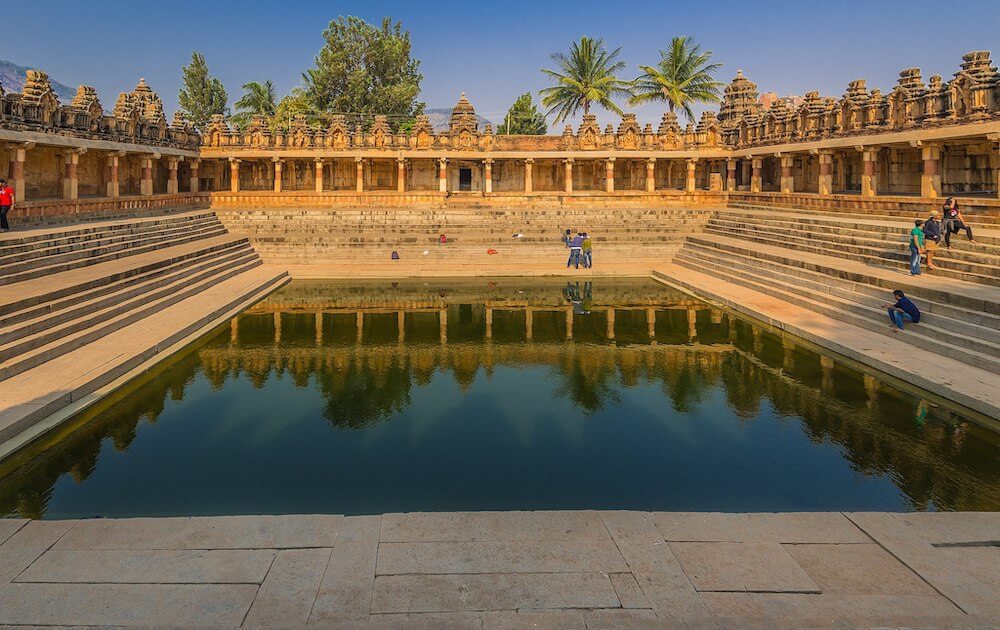
Bikashrd, CC BY-SA 4.0, via Wikimedia Commons
Nandi hill is a good place to start your Karnataka travel if you land in Bangalore. Otherwise you can skip and visit other historical places in Karnataka.
Khangkar mud house looks like a good option to stay in Nandi area.
2. Skandagiri Hill – One of the Many Karnataka Destinations Popular for Night Treks
One evening my college friends asked me if I would be interested in climbing hills through jungle paths, and I instantly said yes. All of us hired a cab and drove from Bangalore to the bottom of Skandagiri hill from where the trek begins. In no time we were with our flashlights treading on steep muddy trails fringed with bushes and grasslands of the ubiquitous Karnataka jungle.
Giri means mountain in Kannada. At an elevation of 1450 meters, Skandagiri hill is a neighbor of Nandi hills. I’m not sure if I knew about the proximity of these two mountains when I hiked Skandagiri at night during my first year in Karnataka.
The hike took us about a couple of hours. And we were at the top by 3-4 am. As this hill is popular for its night trek many food stalls and tea counters were functional even at that nocturnal time.
The morning brought fresh dew, and we clicked pictures climbing stones. This is an easy beginner night trek so go with some friends without a doubt.
I don’t remember if we had hired a guide. The trail is well-worn. During the day one can always find a way to the top. But for the night be better prepared or go with someone who has already visited the hill. The Siddhartha Raja podcast I mentioned above can give you all the information about this mountain too.
On Skandagiri, you spend the night under the stars. Don’t forget to see the remnants of the Tipu Sultan fort that was destroyed by the British after they took it under their siege. Two temples at the bottom and the top of the hill do add more interest to the trail.
Skandagiri and Nandi makes for a good 2 days trip from Bangalore. If using public transport you can get a bus to Nandi hills.
3. Dodda Alada Mara — The Big Banyan Tree
That big bugger monkey took my pineapply away. My legs hurt from cycling, and I don’t understand how can a tree grow so big. These were the first few lines I uttered when I roamed around the popular Dodda Alada Mara.
The Dodda Alada Mara — literally translated to Big Banyan Tree — is a giant 400-year-old banyan tree. Located in the Kethohalli village of Karnataka, the tree lies at a distance of 28 kilometers from Bangalore. This Big Banyan is considered the world’s fourth-largest banyan tree.
I cycled to Dodda Alada many years ago with a group (from where I don’t remember). We took a few hours to cycle. The road went up and down. I was once separated from the group but found them back again. The cycling journey was fairly doable by an amateur cyclist like me so I guess anyone with decent fitness can bike to the beloved banyan.
When we arrived at Dodda Alada we parked our bikes in the parking nearby the tree. Once at the Big Banyan do spend some time admiring the huge tree with its roots shooting out from the branches and now penetrated deep into the ground. The tree’s main trunk was destroyed in 2000 so now only these aerial roots support the tree.
When one looks at this gigantic banyan tree which covers an area of 3 acres for the first time, astonishment is a general emotion, followed by admiration for nature. The tree’s crown spawns over a circumference of 120 meters. I couldn’t tell how tall the tree is but it seemed to reach up to the sky. This banyan’s highest branch reaches 95 feet.
We had bought cut pineapple from a stall right outside the tree premises. But when I just started enjoying the juicy pineapple (with chili) one monkey snatched my packet away. The monkeys do make the visit a bit chaotic but what can you do against nature.
The journey from Bangalore to Dodda Alada can also be done via bus. Take one from Majestic bus stand to Kengeri and from Kengeri to Doda Alada Mara. Direct buses to The Big Banyan also run from K. R. Market.
Given I have read The Hidden Life of Trees I know 400 years is not a lot for a tree. But a usual banyan stays alive for only about 1000 years so this one does have a reason to be admired and celebrated.
Dodda Alada Mara can be your first on the list of places of Karnataka. It makes more sense to go to this place if you are in Bangalore. Otherwise, you can skip visiting the tree, unless you are a tree enthusiast (like me).
Do ask the locals about the ghosts around the tree.
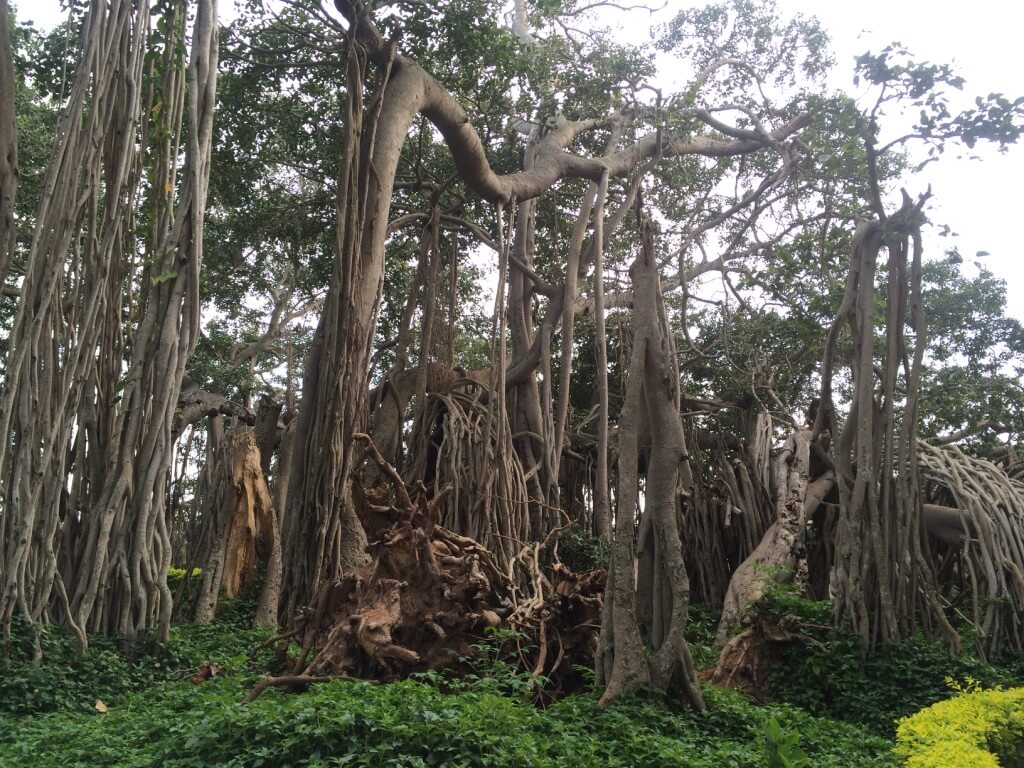
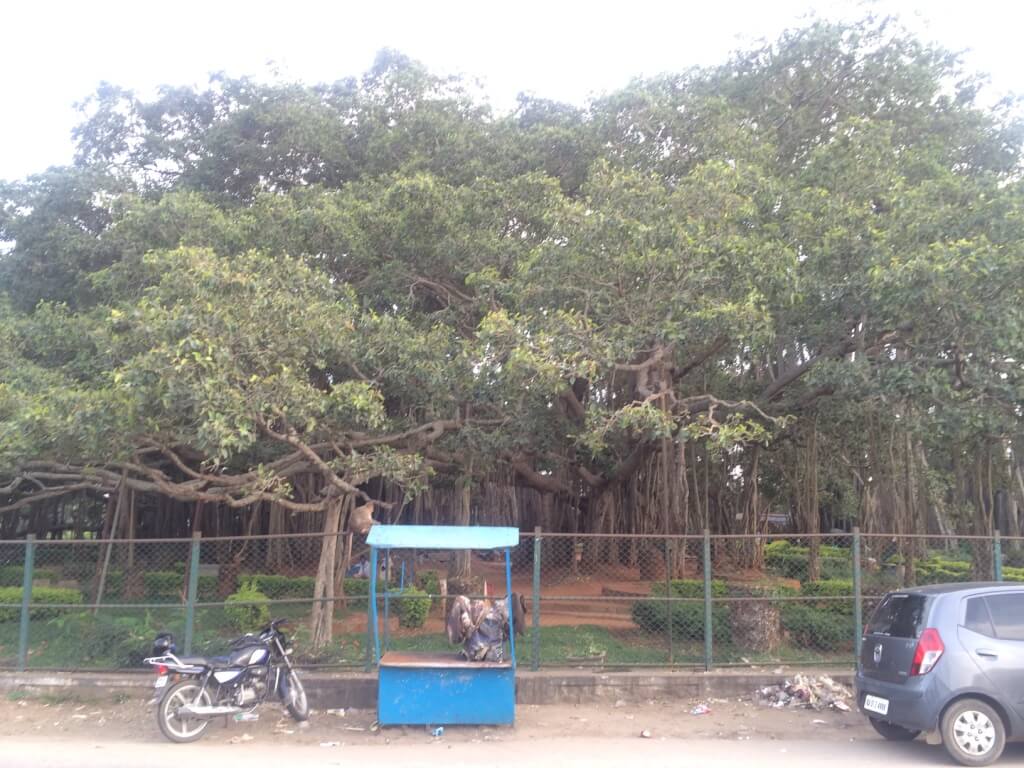
Pro travel tip: While at Dodda Alada Mara don’t forget to visit The Big Banyan Vineyard inspired by its eponym tree.
4. Ranganathittu Bird Sanctuary – Home of Migrant Birds on the River Kaveri
As we approached the Ranganathittu Bird Sanctuary, we could see big birds flying above us in groups. That part of the city felt like a forest. Soon we would see crocodiles basking on rocks and islets full of young chicks chattering incessantly for food.
Ranganathittu bird sanctuary is a natural reserve in the Mandya district of Karnataka. The reserve is 3 kilometers from the historic town of Srirangapatna (another important place in Karnataka) and 16 kilometers (10 mi) north of Mysore. The drive to Ranganathittu bird sanctuary from Bangalore took us about four hours.
Ranganathittu islets were formed when an embankment across the Kaveri river was built between 1645 and 1648 by the then king of Mysore. These islets, originally numbering 25, soon started attracting birds. Once upon a time, ornithologist Salim Ali observed migrant birds nesting in huge numbers on the islands. Upon his suggestion, the King of Mysore declared the islets a protected area in 1940. Now the sanctuary is formed by six of these islets on the Kaveri river.
We purchased a ticket and went inside. As we walked towards the end of the floor from where we could see the islands below, above us in the sky flew painted storks, ibis, pelicans, and herons. At least those were the birds I could identify. When we took the special boat ride that takes in seven people and goes around the sanctuary for 40 minutes the boatman told us that the reserve hosts at least 170 bird species. Some of the common birds found are painted storks, Asian openbill storks, woolly-necked stork, pelicans, river terns, egrets, cormorants, herons, and varieties of kingfishers.
The migrant birds come from as far as Siberia, South America, and the Himalayas. You can also spot crocodiles, otters, mongooses, and flying foxes there. Just keep your eyes open and binoculars in focus.
The special boat ride costs INR 1500 (we shared with a family) and goes farther and longer than the regular boat ride. The sanctuary has many restaurants. Take a good camera and a pair of binoculars, if you have one. The season to visit is from December to June. Migratory birds come in December and nesting begins in January.
Do ask the locals and the boatman about the flooding in the sanctuary. I’ve linked my article on Ranganathittu above so go through that for more pictures and details.
You can also visit the bird reserve if you go to stay in Mysore.
How to reach: Mysore is well connected by road, rail, and air and from Mysore to the bird reserve is a short car or bus ride.
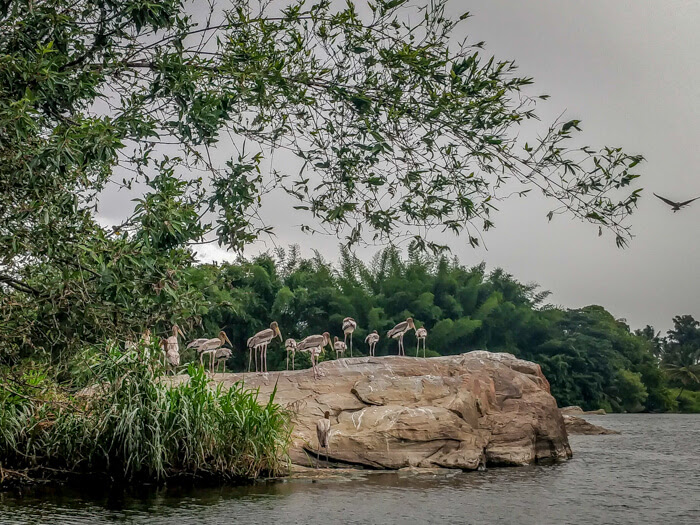
5. Mysore City – A Modern City With Yoga, Good Food, Artists, and Hills Around
I remember the brightly-lit Mysore Palace as our car spun on the roads at a distance. My father asked me to ignore the palace, but I insisted. Demanding the driver to turn around to get us a closer look, we gazed at the royally lighted Mysore palace for a long while.
A trip to Ranganathittu Bird Sanctuary can be combined with visiting the Mysore city. Both lie at a distance of 20 km (13 miles) from each other. Hindi speakers call the place Mai-sore, and I mention this because my father once failed to recognize the city when I used the usual pronunciation my-soor.
Karnataka state was once the kingdom of Mysore under the Wadiyar kings for nearly six centuries from 1399 until 1956. Patrons of art and culture, the Wadiyar kingdom along with Hyder Ali and Tipu Sultan, who ruled there in the 18th century, developed the aesthetics of the place much. After the British, the kingdom was resolved and was joined under the constitution into the states of India.
Mysore is a well-developed city not with its own airport, restaurants, apartments, hospitals, institutions, and roads. Amongst its many historical temples and structures, Mysore is popularly known for the royal Mysore Palace. The palace should be roamed around during the day but gazed from a distance during the evening when it is lit up. Then there is Philomena’s church and other old buildings too. My favorite activity of Mysore seems to be roaming around the city on a bicycle enjoying fresh coconuts every now and then. And go into the bylanes of Mysore to find the artists at work.
Many years ago when I visited Mysore from Bangalore with my parents we hired a taxi for a one-day tour. But this place to visit in Karnataka is a mix of modern and ancient and thus deserves at least a few days. Mysore is also a center for yoga and one of the well-known (and personally recommended) yoga centers is run by A.G.Mohan.
Here is an organic farm stay if you are looking for staying in Mysore. But Mysore has many more heritage and natural properties of interest.
Here are some: Gitanjali homestay, Cornerbunker, Aashraya homestay, The Bunkers Ashram, Laika Heritage Stay, and Green Hotel India.
Pro Tip: Do climb Chamunda hill to have a night view of the palace or just to get a drone view of the city.
How to reach: Well connected by road, air, and rail.
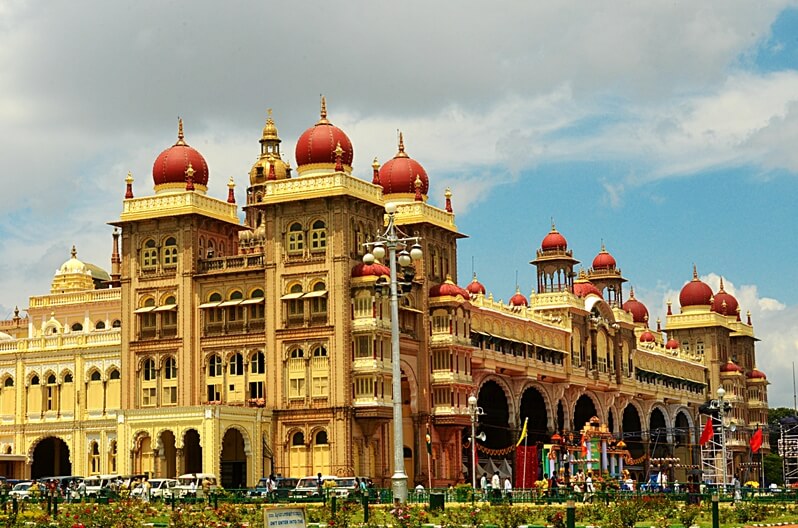
Jim Ankan Deka, CC BY-SA 3.0, via Wikimedia Commons
6. Dandeli National Reserve – A Jungle Fairy Tale
Standing at the top of that watchtower, we saw the mango-golden sun starting its journey into the abyss. Between us deep-green trees stood neck to neck forming the deep Dandeli forest. Not even an inch of land or mountain was visible amidst the foliage. Just imagining the wildlife there gave us goosebumps. And then the peacock calls echoed. I, to date, wonder if I saw it all or was Dandeli just another one of my myriads of daydreams.
Dandeli is a deep jungle reserve in the Uttara Kannada district of Karnataka about a twelve-hour drive from Bangalore. The 1200 km square of Dandeli Wildlife Sanctuary or Dandeli National park, which also contains the Kali Tiger Reserve, is home to two hundred crocodiles, fifteen tigers, twenty-three panthers, and twenty-seven leopards.
The muddy Kali river flows through the national park making it a fairy tale jungle. Rafting, coracle rides, and birdwatching are some other activities apart from going for jeep safaris with experienced guides into the reserve.
When people ask me what is one of my favorite places to travel in Karnataka, I say Dandeli.
Where to stay? I stayed in the Kali Jungle Lodge maintained and run by the Karnataka government and the forest department. The jungle lodge is located right on the river bank and one can watch hornbills and crocodiles busy in their daily routine from the hammocks outside their huts.
Many other old properties like Dandeli Jungle Camp and a birdwatching cottage known as Old Magazine House are available for stays too. All of these guest houses have their own itineraries around the forest, river, and backwaters. Culturally intrigued tourists can also visit tribal people to understand their lives. I would advise to be compassionate and empathetic to these tribes whose primary home is the jungle and they completely depend on the government for their survival.
Dandeli town has many homestays too. Madhuvan homestay looks really nice, or go here to scroll through them all. For further details on the Dandeli sanctuary read both my articles: living at Kali jungle lodge in Dandeli and a day at Dandeli Jungle camp.
How to reach: By road or take a train to Dharwad (55 km away from Dandeli).
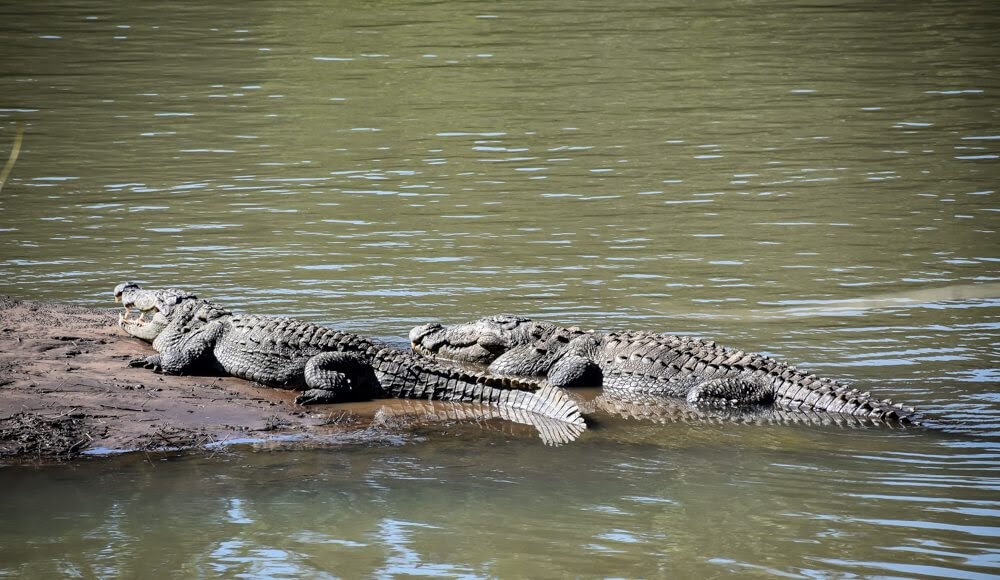
7. Dubare National Park – Elephant Elephant EveryWhere
The elephants won’t be coming out today. The river is overflowing due to the rains. Said a worker of Dubare National Park when we approached him on the banks of the Kaveri. I couldn’t tell if he was melancholic or just happy to have a day of rest.
Most of the 150 elephants at Dubare were used to carry logs on their backs. Now as logging operations have stopped, the Karnataka forest department wondered what can they do with the elephants. To be able to continue caring for the big animals, the department created elephant interactions.
Dubare camp is a deep jungle that has other wild animals too. After taking a ticket, one can engage with and bathe the elephants who are brought out from their deeper abodes in the forest to the Kaveri river. There in the playful river elephants interact with the animal lovers. Trained mahouts drive the activity for a safe experience.
One of the main places to stay near Dubare is the Jungle Lodge. Their standard itinerary comprises bird walks, coracle rides, and jungle safaris. On a day visit, one can bathe the elephants and also take a coracle ride with the locals on the Kaveri river.
We visited the Dubare elephant camp while returning from Coorg to Bangalore by road (Kodagu). The camp lies in the Kodagu district and is about an hour’s drive away from the main town of Coorg.
Parking is right outside the sanctuary. Many food places circumscribe the park.
Places to stay near Dubare are here: Carpe Diem Stay and Coorg Peacock feathers homestay.
How to reach: By road.
8. Hampi Village – Rich Heritage Cradled in Nature
Ancient ruins scattered amongst hillocks and trees, snake sculptures peeking from caves and river beds, carved boulders, wild langurs, lush paddy villages, ubiquitous crunchy dosa corners, blue skies, simple people, dogs and cats running free on village roads, mountains to climb, and historical temples scattered throughout are only some of the features of Hampi, one of the most interesting and unpredictable tourist places in Karnataka.
See this Hampi photo essay to marvel at the destination and my extensive guide to places in Hampi will be your tour guide.
Relics dating as old as the 3rd century BCE, some of them from the Ashoka empire, have been excavated in Hampi making us wonder since when has this place been inhabited by humans. Hampi village and the surrounding area were the capital of the rich Vijayanagar empire once. The kingdom was brutally destroyed by the Muslim invaders in the 15th century.
So now Hampi is a collection of ruins and remains of the old temples of the empire, the royal market, elephant stables, queen baths, many stepped tanks, royal auditoriums, and symmetrical monuments so pretty you wonder why would anyone vandalize something that beautiful.
But those remains aren’t just found in their designated places. They exist in hidden corners, under the rocks, carved on stones in hills, inside the temples, near the river bank. We couldn’t see the carvings and sculptures near the Tungabhadra river for the river had flooded over. I visited in September — rains had just started receding Karnataka during this month. A coracle ride on Tungabhadra would be pretty joyful in the dry season. Get to the other side to explore more.
Trail maps for most of the discovered ruins are provided by the government. But I enjoyed getting on my own path and discovering one relic after another. Walking on stone paths near the shore fringed by giant precipitous rocks on one side and by Tungabhadra on the other is an experience like no other.
But amidst the ruins and hill-top temples don’t forget the villages of Hampi. They are filled with cattle, local life, and endless paddy fields. Find the Sanapur lake and either jump in or climb boulders.
One week is recommended to explore Hampi.
Places to stay in Hampi: Gowri cottages near Sanapur lake (I stayed here but it doesn’t seem to be functional now), Abhi Homestay Hampi, Vinayaka homestay, Srinivasa homestay, and Banana farm house. If you like none of these, scroll through all the Hampi guest houses here.
How to reach: By road or take a train to Hospet (Hampi is a small rickshaw ride from here).
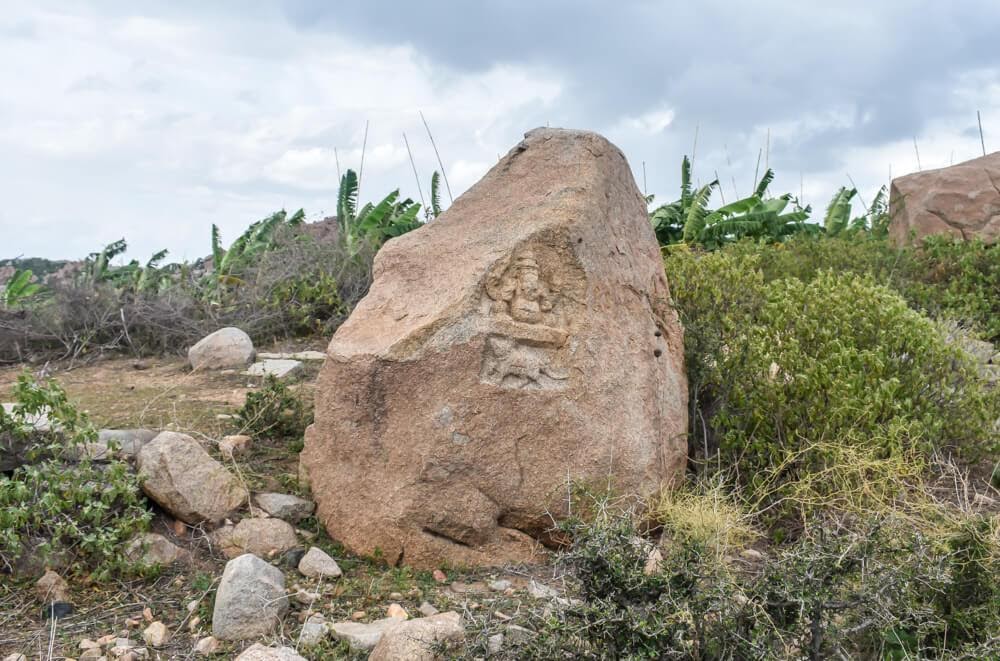
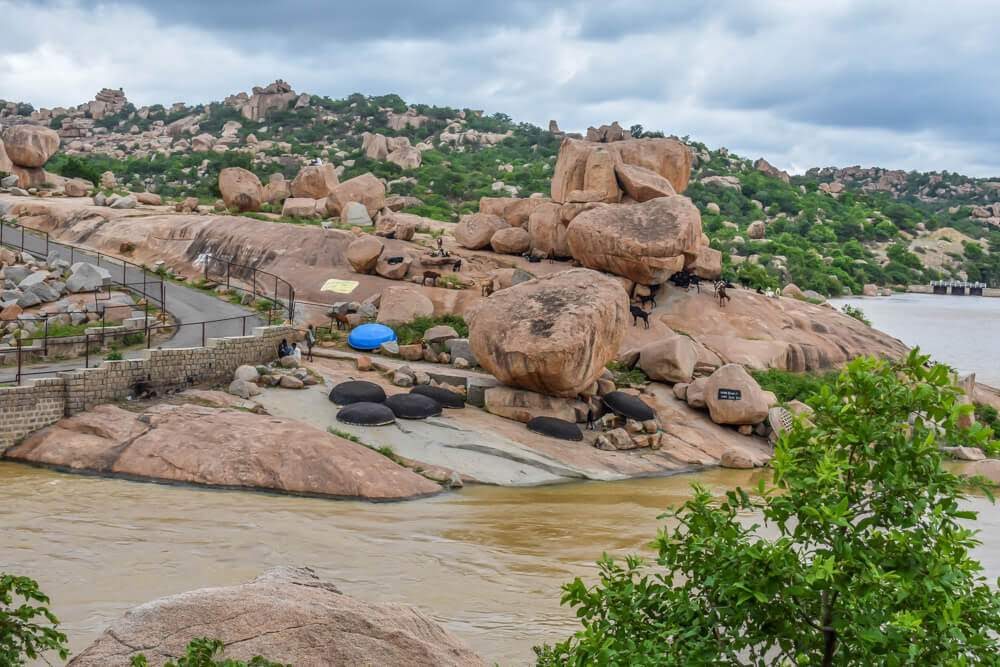
9. Daroji Bear Sanctuary – India’s First Sloth Bear Sanctuary
Hampi has a bear sanctuary? An overexcited me replied to my partner while gulping down a beer in our Hampi cottage.
Yes. Tomorrow?
Hell yes.
That’s how we ended up visiting Daroji bear sanctuary (about 80 km or 50 miles from Hampi). Founded in 1994 in the Bellary district of Karnataka, Daroji is home to at least 130 sloth bears. The reserve was formed when the forest department started getting complaints of bears attacking children and adults alike. What could the bears do? Their homes — that is the boulder-filled Hampi villages in whose caves and foliage they lived — had started seeing too many visitors and local dwellers. The guards and the farmers there still tell stories of bears trespassing farmlands at night to steal sugarcanes and other sweet produce.
Now bears have a sweet tooth, don’t they?
What is a sloth bear? Found in lower hills and dense forests, sloth bears are thinner than brown and Asian black bears. With a rough mane, a shaggy fur, and a slow gait, sloth bears were first thought of as sloths but then someone in the sane mind saw the sloth bear size and figured.
This 8000 hectare protected land can be entered by paying 500 rupees for your car. The drive from Hampi is 2 hours long.
The best time to visit the sanctuary is around 5 pm when the bears come out to lick the honey off rocks. Bring a good camera and enjoy. And thank you for not being noisy.
Ask the guards how did the honey end up there.
My guide to Daroji sanctuary, its history, about sloth bears, and visiting tips is a good read before going here.
How to reach: By road.
10. Sakleshpur – The Land of Tea
I think I have visited Sakleshpur, the land of tea, coffee, and spices twice. But I can’t be sure. The rolling velvety green hills in Sakleshpur could be befooling me in believing I was there more than once. The number of visits doesn’t matter for I still haven’t explored Sakleshpur well.
But I can tell you Sakleshpur is a hill station in the Western Ghats mountain range of Karnataka. The slopes of this hill station are dense with tea, coffee, and spice plantations. The 18th-century Manjarabad Fort sits on top of one hill.
I remember taking two rooms with my friends in a simple accommodation. We had local food and walked around the market. During the day we explored the hills and plantations. My memory starts fading here.
Research tells me that Bisle Reserve Forest and Jenukallu Gudda peak are two good places to visit in Sakleshpur. The town’s location and geography make it one of the best trekking places in Karnataka.
Check out these places to stay in Sakleshpur.
How to reach: By road or rail.
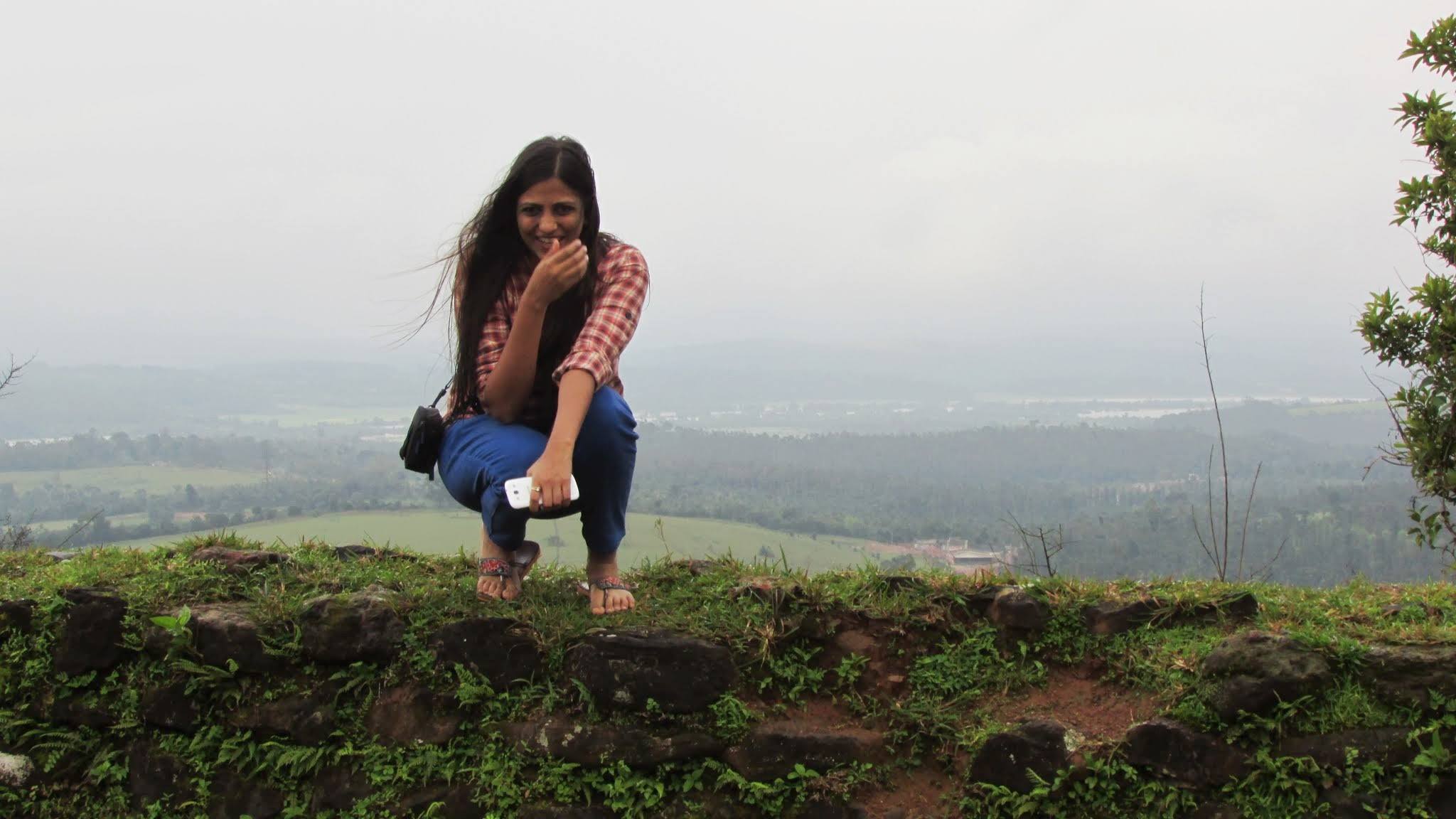
11. Panchapalli Dam, Bettamugilalam Village, and Driving Through Aiyur Forest – Lush Views (Though these places are in Tamil Nadu I had already added them here without realizing it. Feel free to explore.)
“You are not supposed to be sitting on this side of the waterhole.” An angry old man shouted at us in half Hindi, half Tamil, and English. Hand gestures accompanied too.
“Why? We saw other people going from here.”
“You can’t be here. Elephants come here to drink water.”
“Oh. We thought we can come until here.”
“Go away.”
“Sorry.”
This conversation with an un-uniformed man near the waterhole in Aiyur forest didn’t go as smoothly as I have presented it now. When the person — who I still wonder if he was the guard — saw us sitting near the waterhole he shouted from the roadside at us. We couldn’t understand what he was saying and as we had seen people on our side of the muddy pond we didn’t know what we had done.
Tip to the forest officers — please put signboards in 2 languages warning people of dangers and their limits.
Learning as a traveler — don’t venture in the forest without asking the guards there.
Well that Aiyur forest which lay on our way from Bangalore to Panchapalli dam contains the Denkanikottai village. None of these places are well-known. Not a lot of people go to the dam or other destinations I mention here. There was no forest guard near the natural pond. We hadn’t seen any officer on our way through the entire forest. But where we sat lay a lot of elephant poop still in the process of drying.
I had a great day chasing the blue marker of this dam and the village on my Google maps. For the full travel guide read my travelogue of the Panchapalli and Bettamugilalam drive.
We also visited the small Bettamugilalam village — which is at a height of 3000 m. Bettamugilalam was a small gorgeous village where neon pastures were dotted with colorful mud huts. Jackfruit and pipal trees were ample. And under the trees bright idols and temples stood shining.
To visit the Panchapalli dam we had to trace our way back to Denkanikottai (Aiyur forest). We arrived near the dam around late afternoon to find it completely dry.
We turned around from the dam and parked our car to find a trail into the lush pasture we had seen before. Walking downhill amidst hundreds of cows, one of whom had diarrhea, we arrived into the arms of the pasture. We only climbed up when the sun was about to set. What a day it was!
Oh did I forgot to mention the dark pink lotus lake and the Indian blue rollers flying above.
Pro Tip: On your Karnataka trip, drive, cycle, or run around in the monsoon and post-monsoon season. There can be only fewer pleasures in life.
How to reach: By road.
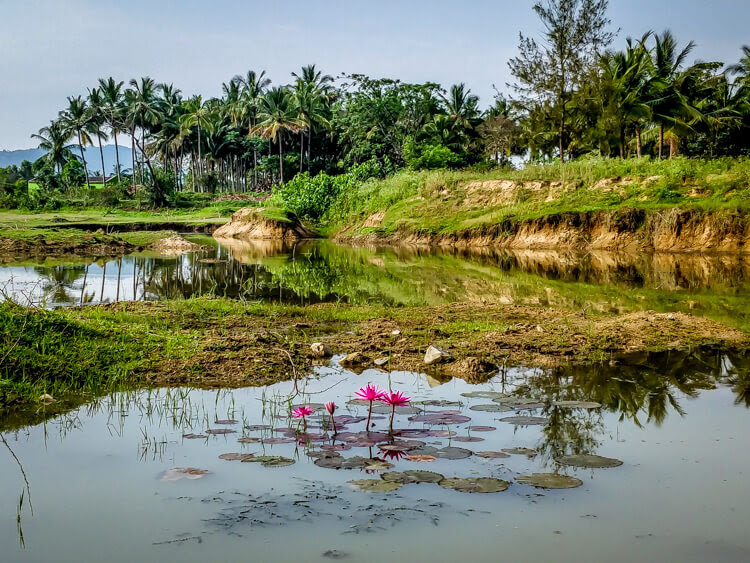
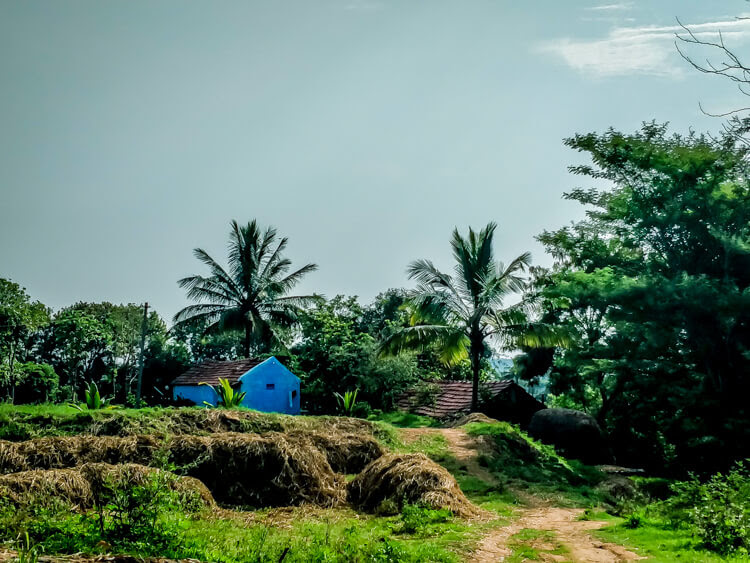
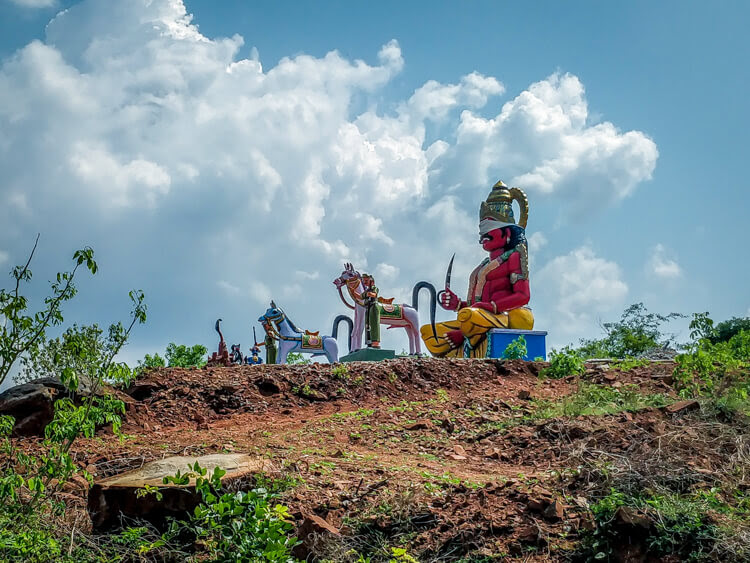
12. Chikmagalur – The Land of Coffee
Coffee plantations, swaying silver oaks, green grasslands, endless velvety mountains, thick forests, blue lakes, forest reserves, rivers and dams, ancient temples, hills to hike — what can one not find in Chikmagalur, a hill station district on the Western Ghats of Karnataka.
About a five hour drive away from Bangalore (oh on this note let me request please don’t be angry with me for measuring every place from Bengaluru as that was my residence in Karnataka), Chikmagalur town is at a height of 1000 meters. It gets hot in March and April but as soon as the rain sets in the mountains become misty and the lands turn green.
We recently spent a month in Chikmagalur after the serious lockdowns of the first COVID wave. The main Chikmagalur town is surrounded by various villages and we were in the Chikkolale area. In that one month, I saw and explored so many places of this hilly region that I have to write about 20 guides just on Chikmagalur alone.
Sitting in our homestay swing upstairs we could see the Mullayanagiri peak — the highest peak of Karnataka — on a clear day. And if it got too rainy we would open up a bottle of homemade fig wine made from the figs of the old tree in the house itself.
The hills of Chikmagalur are interconnected and one can hike to one hill from another. But most of our efforts to trek there failed because the forest department had closed those hikes for the time. Travelers had been lost and a story about a leopard attacking a tourist had not helped either. The forest officer told us they were soon about to set up a tourism community under which they would officialize all trails and appoint guides and guards for each one of them. But for the time we had to confine to hiking around on our own only in open mountains (except this one time when we went through a jungle trail).
Here is the Blue Bell homestay we stayed at. Foothills homestay, Memories of Malnad, and Leisure homestay all look really nice too.
Pro Tip: Oh, I forgot to mention that the Fishland restaurant of Chikmagalur town is not to be missed, given you eat seafood, my only sin. Swiggy and Zomato work around the main town up to a distance. Just saying. No pressure.
how to reach: By road. The nearest railway station from Chikmagalur is 45-minute from the town.
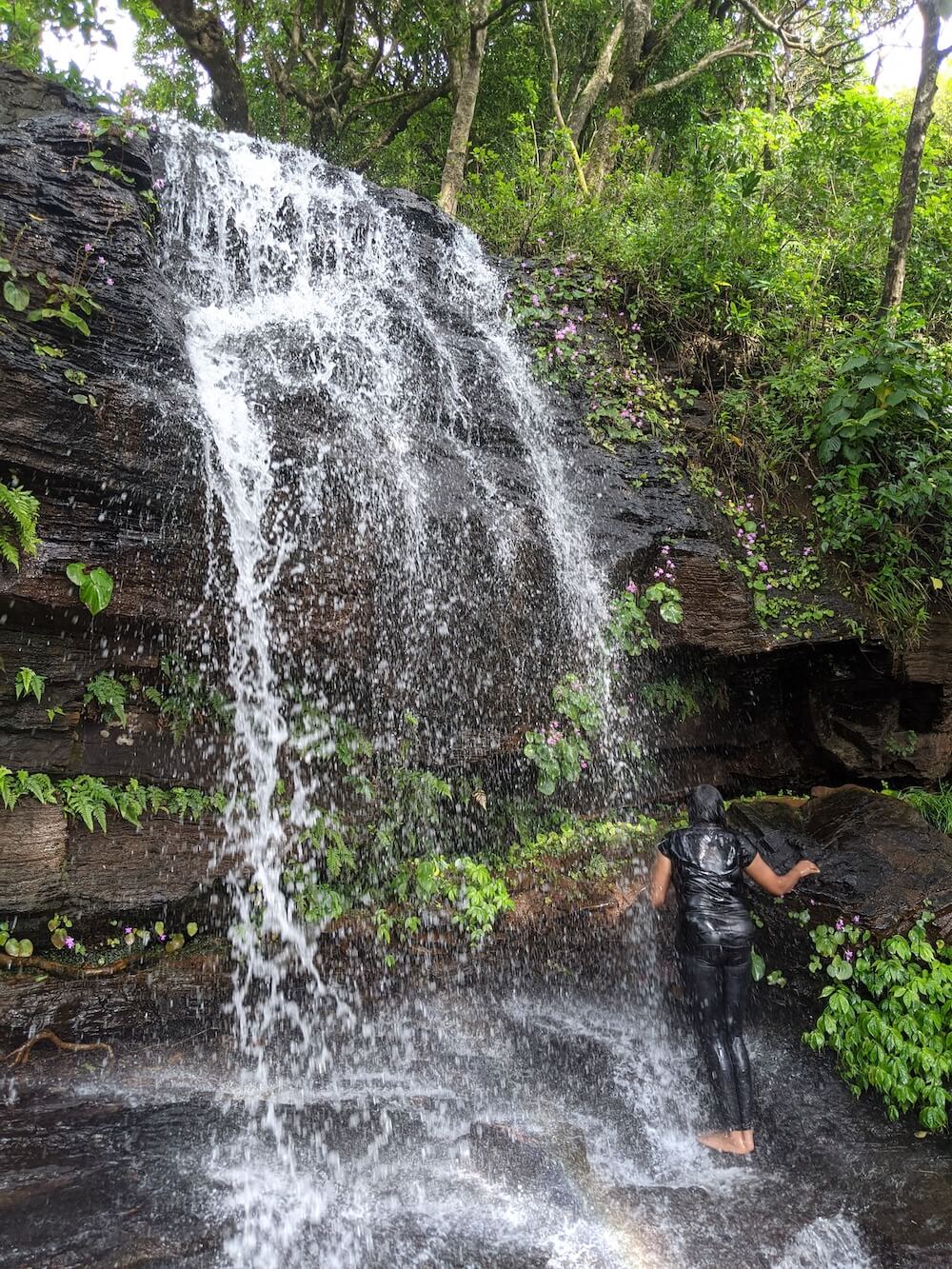
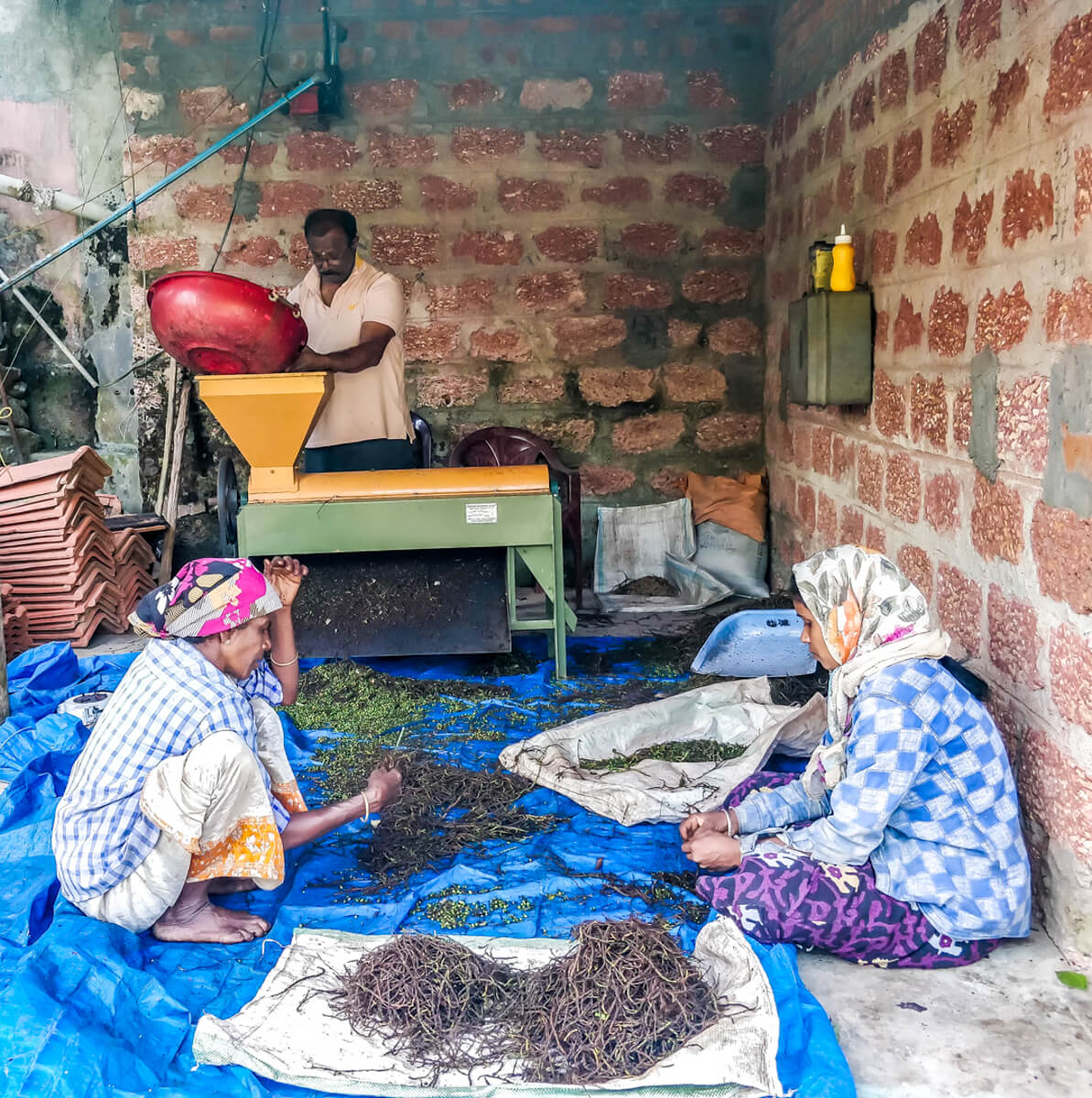
13. Bhadra Wildlife Sanctuary – The Wild Thrives Here
The first time I entered the big room of River Tern Jungle Lodge, I saw the bellowing Bhadra river in front of me. The mountains on the horizon were faintly visible. We were on an island and only on my far left could I see other huts scattered sparingly. Later I walked over a hanging bridge to get to another island to eat a large buffet. After stuffing ourselves on fried fish and sambhar (I also plucked ripe bananas right from the bunch hung in the dining), we made our way to the reception where a jeep awaited us to take us into the deep Bhadra wildlife sanctuary, home to leopards, tigers, bears, elephants, and other wild animals.
It could be all made up. Believe if you have to.
Bhadra Wildlife Sanctuary was the final cherry on our one-month Chikmagalur trip. The reserve is 80 km (50 miles) from the town of Chikmagalur and the drive took us almost two hours.
Bhadra river is also good for short swims and kayaking because the crocodiles are not close to the edge. River Tern Jungle lodge is an expensive accommodation but the stay includes all meals (which are too many and too heavy), two jungle safaris, a bird walk, and bonfires, etc.
This documentary on Bhadra Tiger Reserve by the Karnataka Forest Department is a joy to watch.
How to reach: By road.
Pro Tip: Do not take the massage from the therapy center at the Bhadra jungle lodges. Do not.
14. Temples of Belur and Halebidu — The Best Examples of the Royal Architecture of Karnataka Empires
While roaming around the Hoysala temples of these villages, with a Nikon in hand, and curiosity in my heart, I could never take a moment of rest. Although I had the whole day on my hand, the wall carvings and the intricate stonework of the temples studded with deities left me dumbfounded.
How can one make such structures now? Beautiful, marvelous, amazing were some of the overused adjectives that left my mouth. And I have seen my fair share of temples around the world.
The Hoysala Empire ruled the present Karnataka between the 10th and the 14th centuries. The capital of the Hoysalas was initially located at Belur but was later moved to Halebidu. Now what remains of their royal Hoysala architecture is these temples and shrines. 12th century Kannada inscriptions peak from every wall, and most of these are engraved with gods, goddesses, and demons each telling a story.
The towns are an hour’s drive away from Chikmagalur. My guide to the Belur and Halebidu temples provides all the travel information (coming up).
If the myriads of temples tire you out, do consider staying in the villages. KSTDC Hotel Mayura Shantala Halebeedu looks like a good option for both destinations. Bring high-resolution camera.
how to reach: by road or by train to Hassan which is 40 km from Belur.
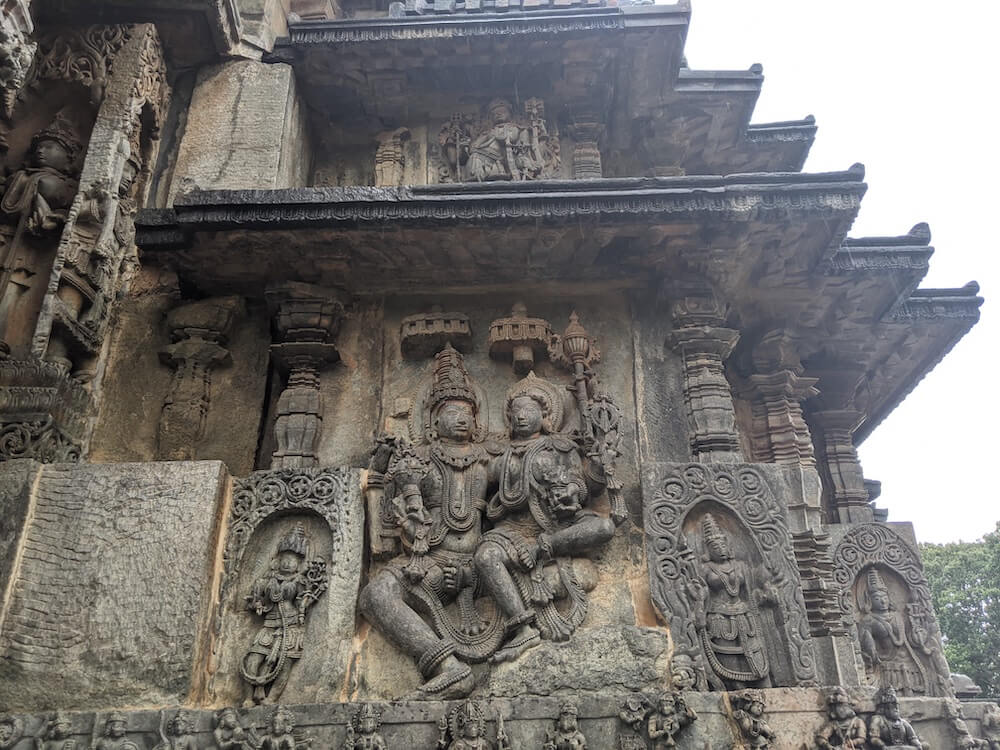
15. Sharavathi Valley (Shimogga and Jog Falls) — A Green Luscious Karnataka Valley Facing Ecological Threat
Everyone has only heard of the 253-meter high Jog Falls of the Sharavathi Valley in Karnataka but no one knows the Sharavathi Valley has about 431 square km of dense evergreen forest. This protected Sharavathi sanctuary is full of azure lakes, obscure hikes, wildlife, waterfalls tucked away in high hills, and remote villages. Sharavathi is one of the most unexplored of the tourist places of Karnataka. In fact, most people don’t even know what is Sharavathi.
When I went to Sharavathi at the end of the year 2019, I didn’t know I needed to take visit permissions from the forest department in the Shimoga city. Also known as Shivamogga, Shimoga is the headquarters of the Shimoga district that contains the Shravathi valley. At that time I didn’t understand why I needed permits to visit waterfalls and lakes from the forest department. But when I drove to some of these natural places I understood that it was all under protection.
Sharavathi river flows through Shivamogga and the Uttar Kannada district of Karnataka for about 128 km (80 miles). But several dams have been formed over this river and its ecological system is under serious threat now. The reserve’s area is divided into core zone, buffer zone, and tourism zone.
Watch the below video if you want to know more about the damages done by the thoughtless developments around the Sharavathi river.
Now a valley where one needs permission from the forest department for almost every lake, backwaters, or waterfall can be imagined to be very untouched and wild. We would start driving on Sharavathi roads and for kilometers wouldn’t find any village or habitation. There was no one to ask as we don’t speak Kannada, and most of the locals don’t speak English there.
We did visit Jog falls once and the water had receded to pretty low levels. One has to climb down 1400 steps to the bottom and climb the same number up, of course. But Jog Falls is only one of the places. My recommendation to visit the Sharavathi Valley for a complete and beautiful experience is to first go to Shimogga and take permission there. See the list of places you can visit and ask for permits for the ones you would like to see. Even homestays take tourists to places without taking any permissions but I won’t recommend that route. The guards of some of these natural places also allow entry to visitors by taking money but those visits are rushed and hushed. So please avoid the risk.
Some stay options in Sharavathi: Gundimane (highly recommended though could be a bit pricey at rooms for about 2500 per day), Sri Ranga homestay (I’ve stayed here and recommend the homestay), Ibbani homestay, and Sugamya farm guesthouse.
One of my most amazing experiences in Sharavathi was the hike to the hidden Belligundi (silver) waterfalls. Read the linked guide for the entire journey. Also, read this article on how a little lakeside picnic was enough to replace the big adventures we were hoping to have in Sharavathi.
How to reach: By road.
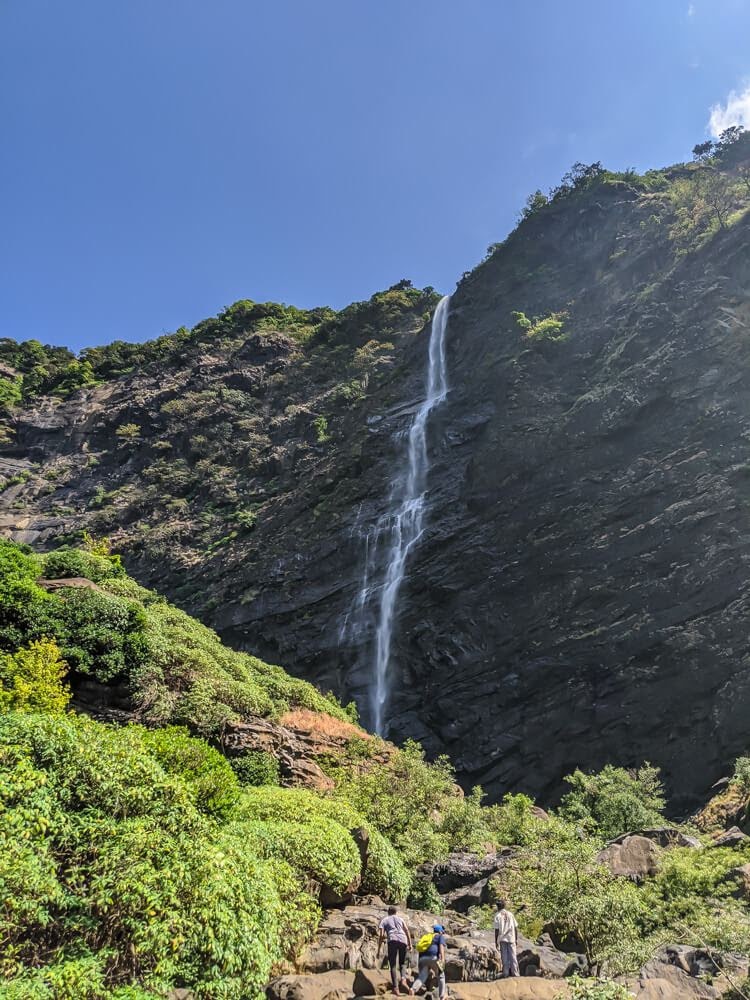
16. Coorg — The Land of Coffee and Avocados
Avocados blended with sugar and carrying kilos of those mushy pieces of goodness home as a gift is how began my relationship with Coorg. Thanks to that homestay that made my first home in this coffee district. Soon I started enjoying Coorg’s unique food, its long history, misty hills, stories of locals, and beautiful drives on my subsequent trips.
Coorg, now known as Kodagu, is one of the hill stations of Karnataka located in the Western Ghats. Locals and travelers flock to Coorg district and its main town Madikeri during summers and monsoon to get respite from the heat and enjoy the luscious rains of the region.
But overcrowding has affected the area negatively. I would advise all the other travel destinations of this Karnataka travel guide over Coorg anytime. Or go there in the offseason (February and March) when businesses need more help. Or choose more offbeat Coorg neighborhoods such as Stuart Hill (near Raja’s Seat). Apart from this linked travel guide, I also have a photo essay on my slow life in Stuart Hill.
Coorgy hills are studded with coffee plantations where pepper, jackfruit, coconuts, betel nut trees, silver oaks, eucalyptus, avocados, kokum are only some of the other plants that grow in abundance. The best idea to stay would be to find a place in one of these coffee estates where you can roam inside freely.
Coorg has a long history, and its people are said to be descendants of the warrior tribe. They used to hunt the wild animals in their plantations, and they still follow most of these ancient traditions. But they are family people whom I have seen help each other all the time.
Some of my favorite places to stay in Coorg are listed in this article on guesthouses in Coorg, and my travel guide from Bangalore to Coorg tells about the destination, its culture, and important places.
How to reach: by road.
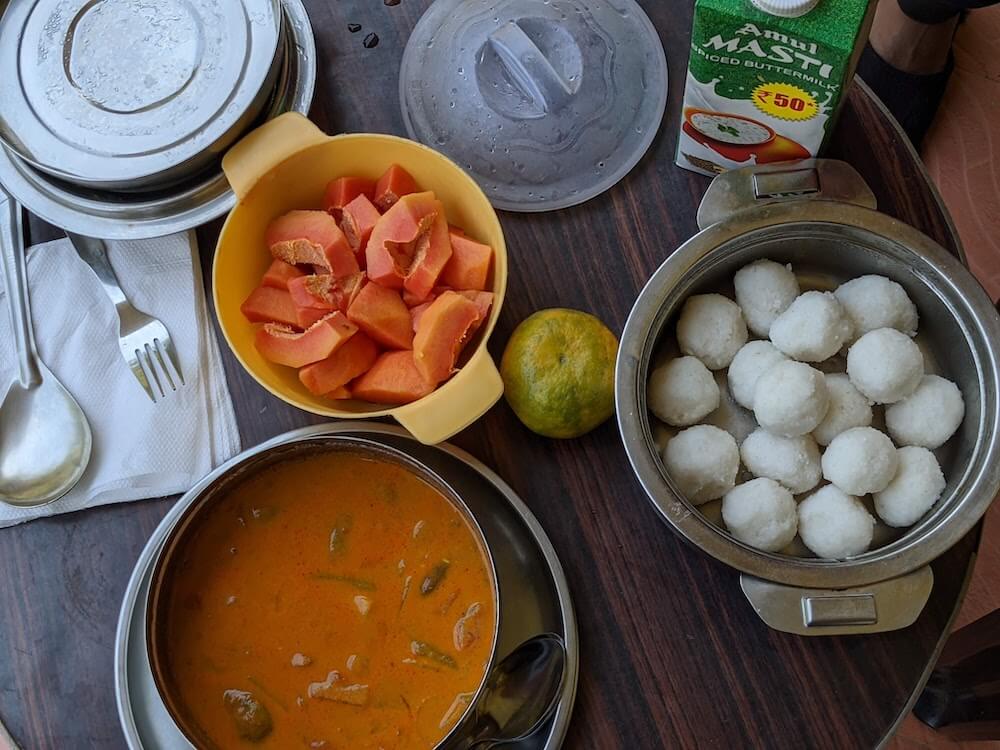
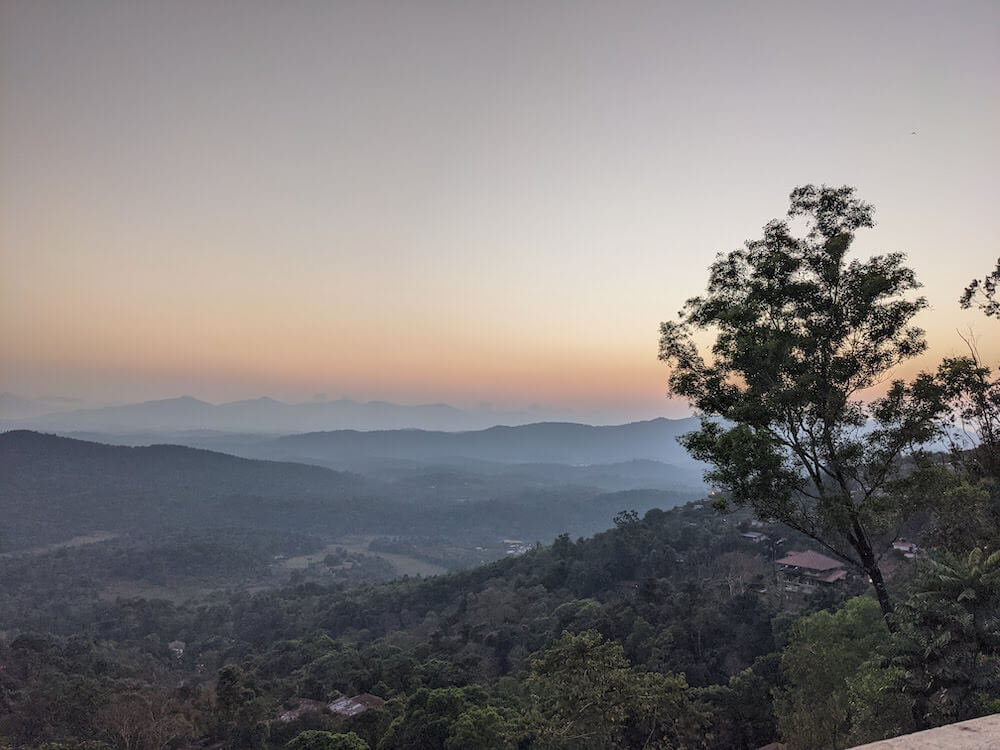
17. Namdroling Monastery — The House of the Monks in Karnataka
On your way to Coorg, do make a stop at Namdroling monastery. This monastery one of the largest Tibetan settlements in South India. The dormitory is huge and the premises are peaceful. Interested travelers who want to understand monk’s life from closeby can call and stay in the dormitory overnight. Do try. But please be respectful and quiet throughout your visit.
How to reach: by road.
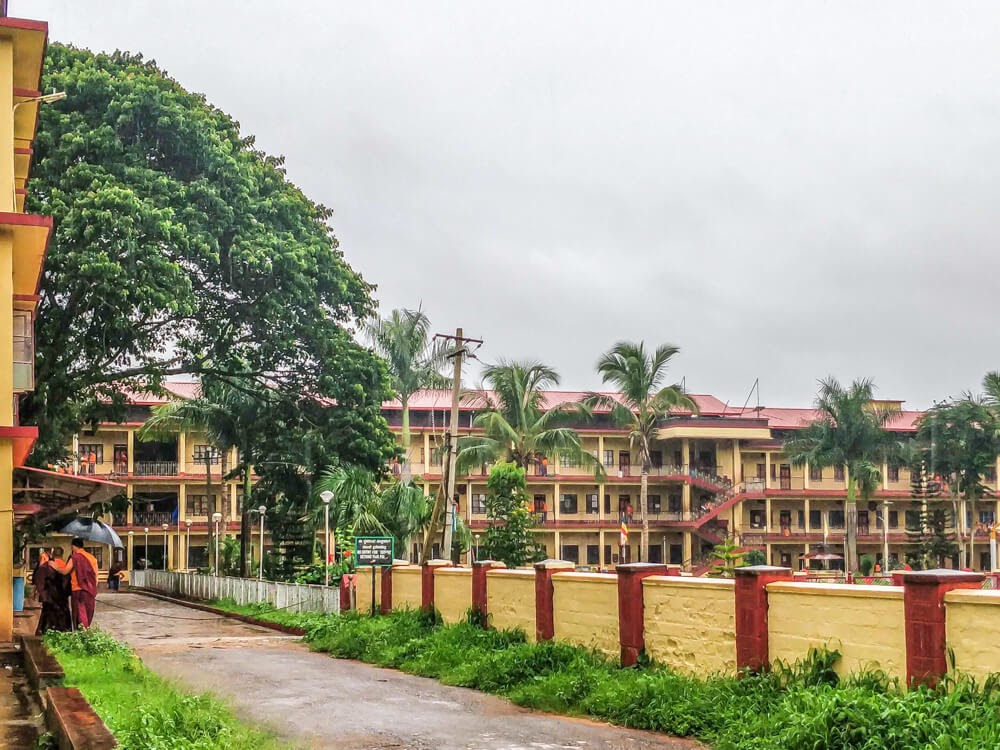
18. Hogenakkal Falls – And a Special Story (On the border of Karnataka and Tamil Nadu)
Holding the hand of my then new friend and now life partner, I sat in the coracle that whirled in the rowdy Kaveri. At a distance, the Hogenakkal falls — literally smoke over the rocks — cascaded to fall from a height of 20 meters. The frothy waters of Hogenakkal drowned all the surrounding sound and the freshwater drops splashing on our faces freshened us up.
Located at a distance of 127 km (80 miles) from Bangalore, Hogenakkal falls is a one-day trip from the city. Or a homestay or hotel can be found in the surrounding area for a longer exploration. Hogenakkal falls are formed as Kaveri enters Karnataka from Tamil Nadu, and thus the long smoky cascade of Hogenakkal is formed.
The 3-hour drive to the falls was scenic. Once at the falls, we used the public toilets and freshened up. Do carry toilet paper because the toilet is old-style. After the toilet, we straight went to the falls. From what I remember we walked over a bridge and then somehow reached the falls. At the mouth of the falls the stable rocks form perfect nature seats.
Behind the falls a further walk brings to a place where people can bath under the waterfall. But naked Indian men (with or without tight v-shaped underwear) will welcome you there so please beware. Monkeys are plenty and cattle roam the area. We also walked quite a bit on the rocks on the banks of the Kaveri and spent time seeing the old trees and the ancient Carbonite rocks.
Hundreds of flying foxes hang on those trees and towards the evening you may witness their flight into the world.
How to reach: by road.
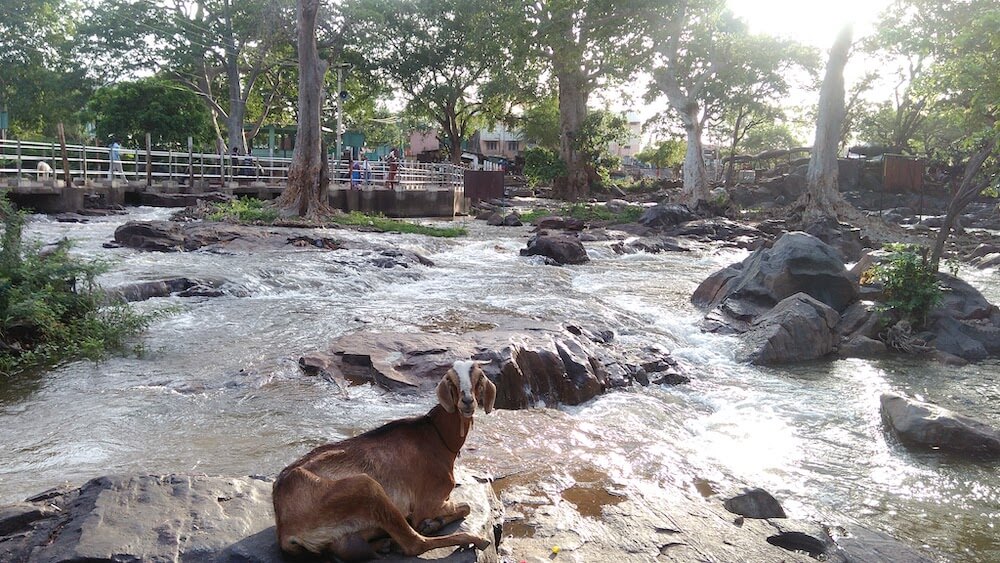
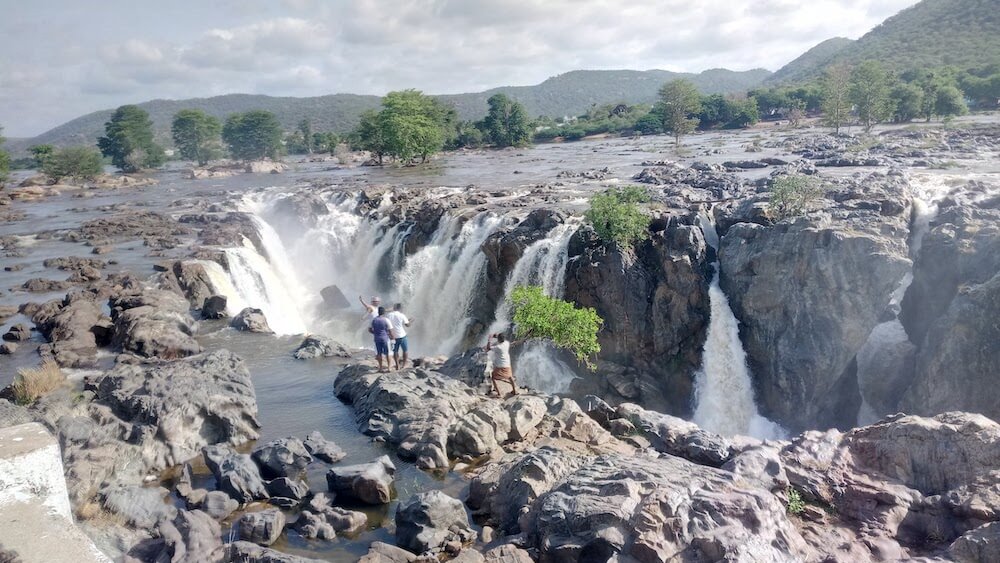
19. Shivasamudram Falls — The Ferocious One
At about 130 km (130 miles) from Bangalore, Shivasamudram makes for another exploration. Shivasamudram falls are ferocious and they fall as a combination of two — Gaganachukki Falls and Bharachukki Falls. The island town of Shivasamudram divides the Kaveri into these two falls.
The falls are located in Chamarajanagar District. The best months to visit this waterfall would be September to January.
Arriving early is the rule so you have enough time to explore.
How to reach: by road.
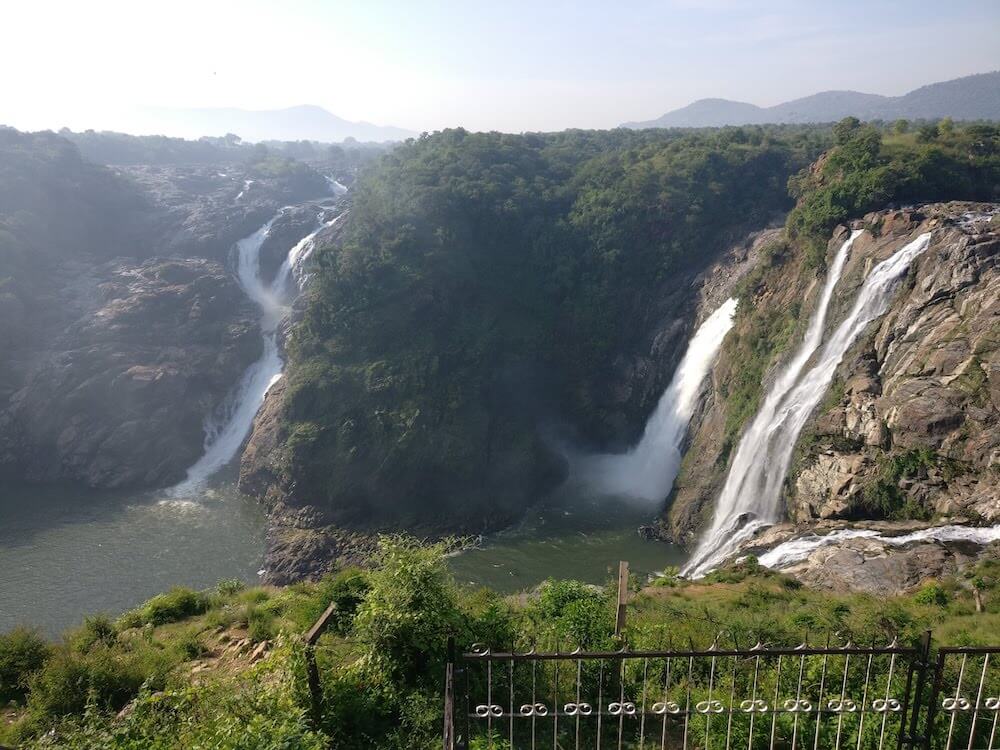
20. Biligiriranga or BR Hills — A Wildlife Sanctuary Where I Spotted My First Ever Leopard
There he sits behind the foliage.
Where? I can’t see.
Sshh. If he hears loud voices he will leave. Let me show you.
The forest guard pointed me to the thickets in front. With an effort of many minutes and using the zoom lens of my camera I spotted the bright leopard perfectly camouflaged behind the thorny bushes. After observing his afternoon siesta for a long time, we drove on. Next we surprised a sloth bear who was just out for his evening meal. Naturally, the bear tumbled away as soon as he saw us. But I had my camera ready and I clicked. My travel guide to BR Hills tells it all.
At an altitude of 3500 feet above sea level, BR hills short for Biligiriranga hills, stand where the Western Ghats meets the Eastern Ghats, and make for an ecological hotspot. In addition to the location exoticism, the BRT wildlife sanctuary is quite large, 540 km² in the area to be precise, and is also an official tiger reserve.
BR Hills are located 179 km (112 miles) from Bangalore. On my one-day trip there I saw a leopard, sloth bears, Indian bison, monkeys and langurs, sambar deer, tortoises, eagles, owls, mongoose, and some other bird and animal life.
We were put up at the expensive Jungle Lodges. If you don’t want to stay at the jungle lodges, you can opt for one of the many BR hills guesthouses. But as they have to be booked separately from their websites, I’m putting down two properties (from Booking) that look promising: Gorukana BR hills resorts and this KSTDC hotel (both with great reviews).
We visited during February end – the peak summer. Maybe our timing was perfect and that was why we could spot so many animals.
How to reach: By road is the best way.
Pro Tip: BR hills is also a good place for hiking. The locals and the forest officials will be able to provide more information.
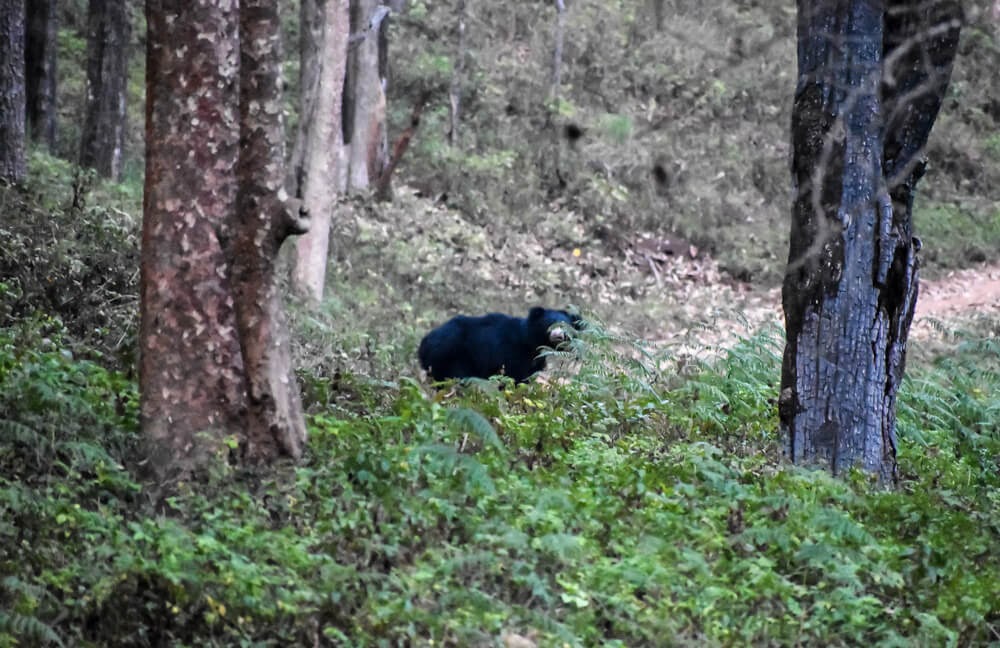
21. Gokarna — A Coastal Karnataka Town With Calm Indian Ocean
He pulled my legs from the sea bed and I fell. But in the multiple trials before this one, I had learned how to float on my back. Effortlessly within seconds, I was on my back this time too. I gazed at the blue sky above me. The calm Indian ocean swayed me from side to side as a mother sways her child while singing her a lullaby. Swimming must be fun, I thought. I floated for more than an hour and decided to learn how to swim properly.
Floating in the sea is my strongest memory from Gokarna. Oh, I also remember eating grilled squids and other sea animals on the shacks there.
The beach town of Gokarna is located on the Southern coast of India. Though I have ventured into very obscure parts of Karnataka, I haven’t been to most of the beaches of Karnataka. But that’s going to change soon and the later posts of the blog will tell why.
On my three days in the town I stayed near the ocean almost all the time. Three beaches of Gokarna are most popular but no one talks about the mountains surrounding these known shores. My partner who visited the town with his friends boasts of many trails going through the surrounding hills. Who knows which one will bring you to a hidden beach?
Make Gokarna an adventure. Coconut Tree Resort, Namaste Yoga Farm, Viraz Valley, and Deva Samudra beach stay.
I highly recommend this place to stay in Gokarna but here are some other options.
How to reach: Gokarna is well-connected by road but the nearest train station and airport is a bit away.
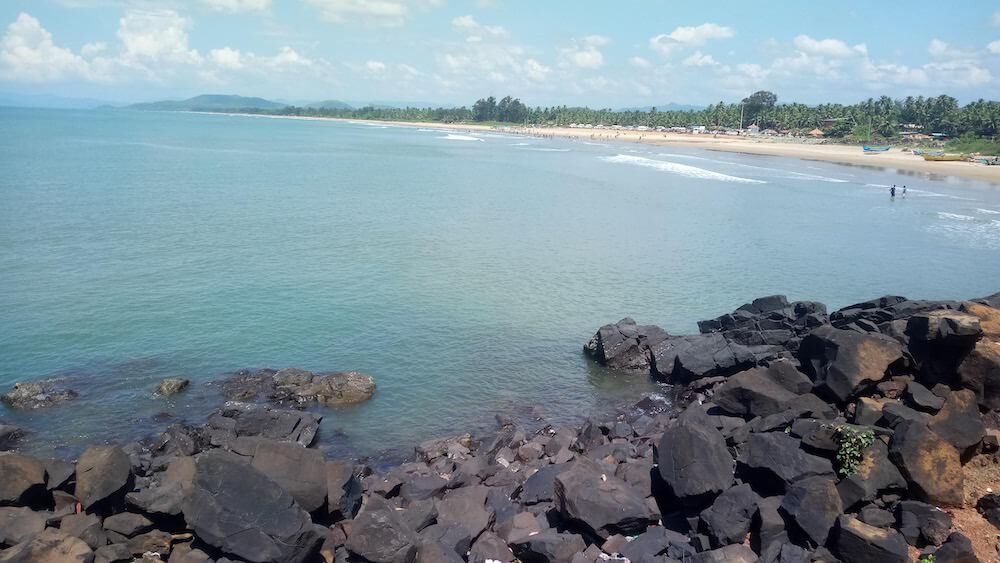
22. Davanagere – If nothing, stop for the Davanagere Benne dosa
As soon as the bite of the buttery dosa touched our tongue, a satisfactory cry left our mouths. The mild coconut chutney and the creamy potato mash accompanied the dosa pretty well. Life seemed complete in those moments.
We accidentally stopped by the Davanagere town during our long road trip from Bangalore to Mumbai, and further on to the Himalayas through Uttar Pradesh. Once in the town, we realized we can’t leave without tasting the dosa that’s named after the town.
Davanagere must be visited just for the Davanagere benne dosa. Benne means butter. My long piece on Karnataka dosa is testimony to the goodness of these crunchy pancakes but Davanagere butter dosa was a level above all dosas I have had.
I’m sure the town will have other things to do but first eat the dosa and then figure out.
See what our early morning hunt for dosa brought us to.
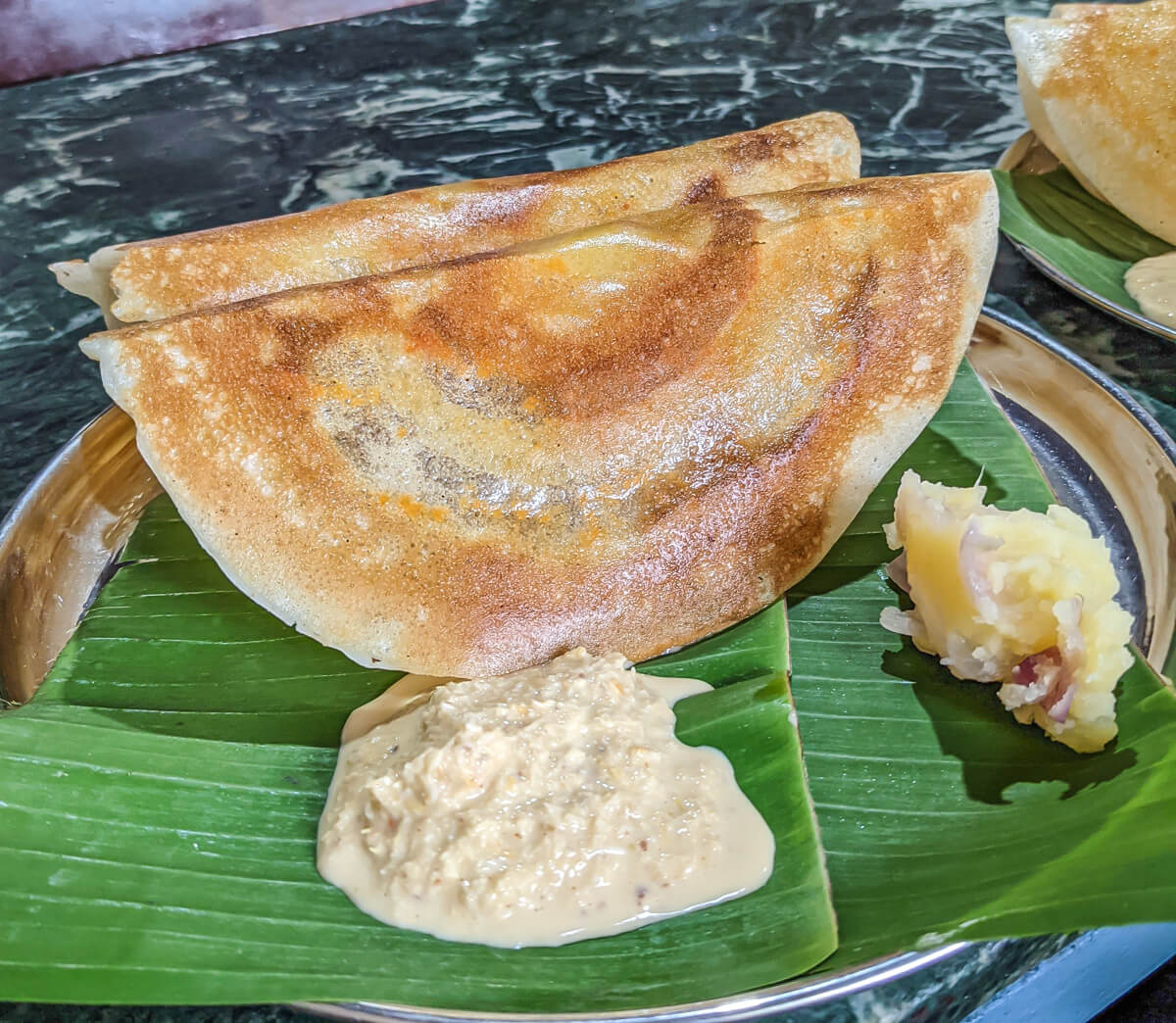
How to reach: Davanagere is well connected with entire Karnataka.
23. Kolar — Temples, Boulders, and Caves
Getting down into the cave formed by the boulders, I wondered how much we will never see. This little boy walked ahead showing us the way into the cave. He didn’t think we would make it as he expected us not to be slow but to start jumping around the rocks, as he had since his childhood. But there we were, being fumbly and clumsy. We saw all he had to show though.
Capital of the Western Gangas who ruled between 350 to 550 CE, Kolar is now known for its milk production, gold mines, and several ancient temples and caves. 70 km (44 miles) from Bangalore, the town of Kolar is easily accessible by public transport also. Some of the places we visited are Anthargange temple, Somnatheshwar temple, and some caves through hikes from the hilltop. You don’t have to worry about finding the caves as many locals, even small kids, act as guides to these hidden points. But make sure to hire a guide who seems trustworthy as many people wander there claiming to guide and incessantly pester travelers to hire them.
The view of the valley from the summit of Kolar hills is panoramic.
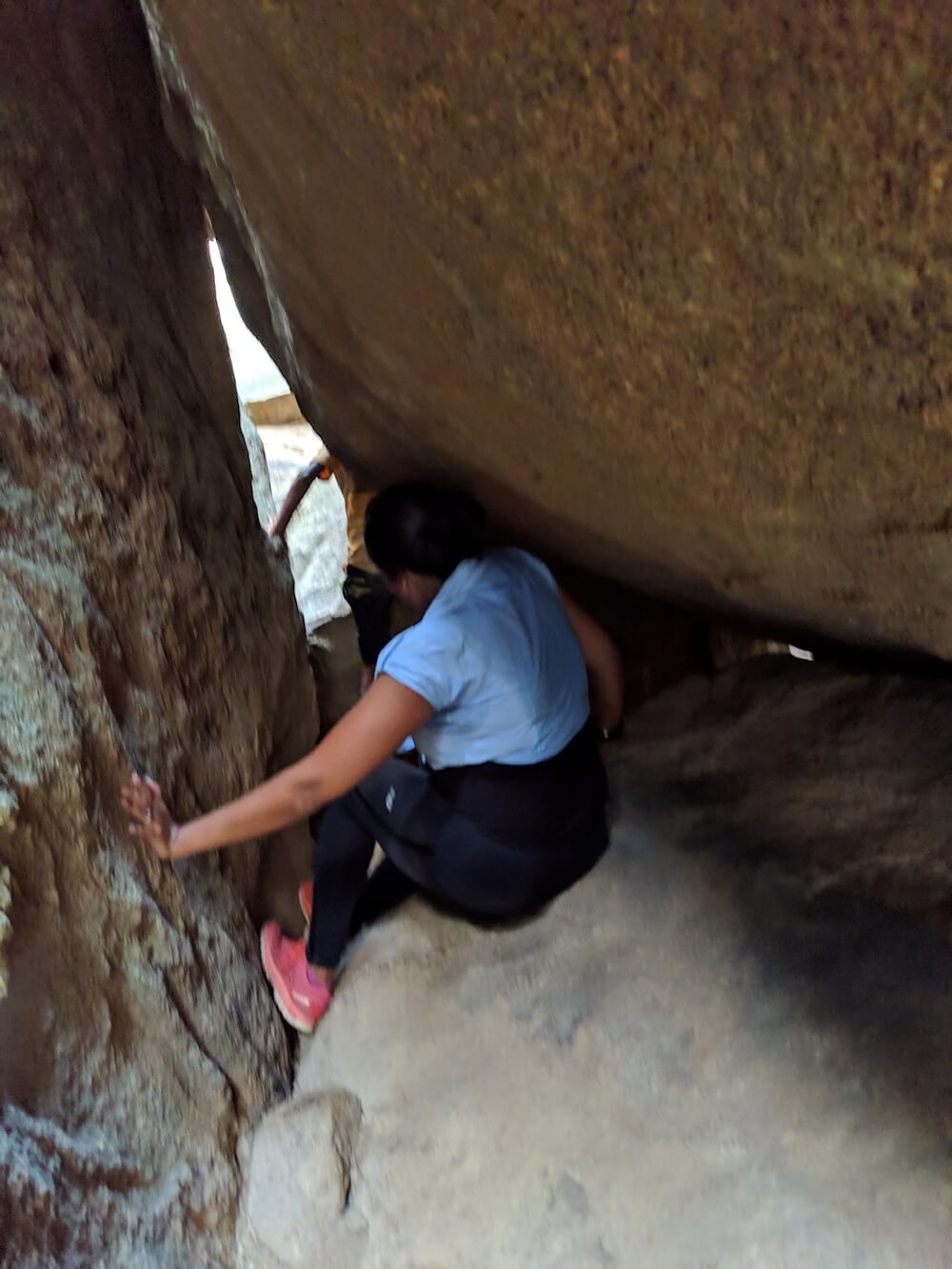
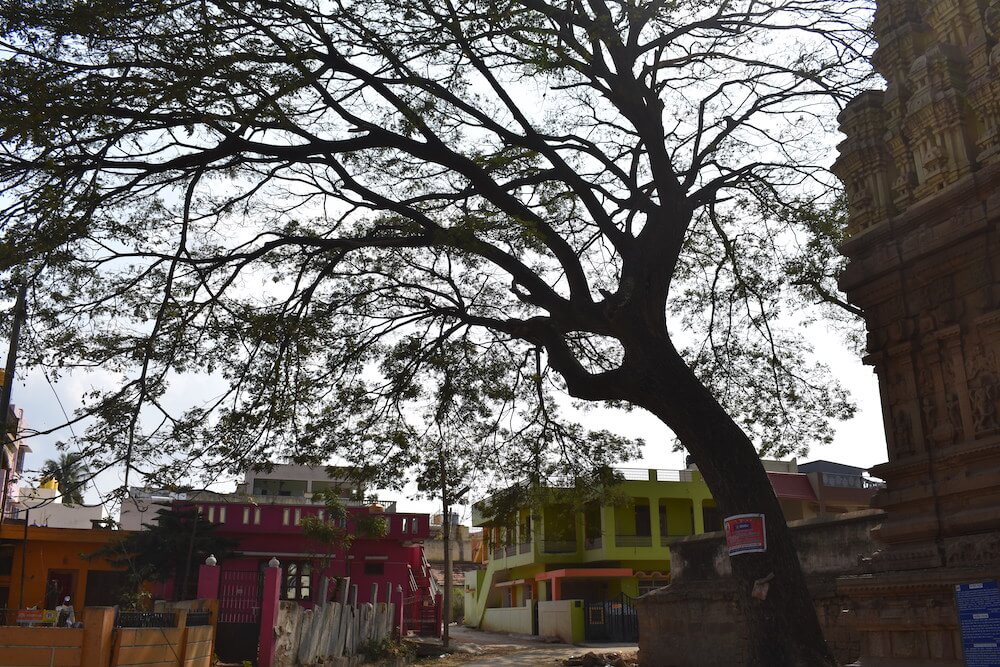
How to reach: Buses run until Kolar but there isn’t a railway station in town.
Travel tip: If you are in Bangalore, do visit Basavanagudi. This old part of Bangalore town is full of ancient temples, caves, and parks dense with flying foxes. Oh, the South Indian food eateries there are some of the best in town.
Another Karnataka travel tip: I have also written about the organic stores for grocery shopping in Bangalore. And places to stay in Bangalore (personal recommendations) are listed in the attached link.
Pro travel tips for seeing Bangalore: Some of the must-see places in Bangalore are Cubbon Park, Lal Bagh, Koshy’s, Indian Coffee House, HSR Agara lake, and Shivaji Nagar. I may sound cliche but these places do give a general and historical sense of Bangalore. Take the metro from MG Road to somewhere. Walk around the town as much as you can. Sip coconuts and try gol gappas (fried fluffed breads filled with spicy water) wherever you find. MTR restaurants also serve delightful traditional dosa and South Indian delicacies. Exploring the Bangalore Palace area on foot is a great way to get to know the city. And many people run heritage walks through Bangalore. Try BangaloreWalks, Unventured, Klook, GetYourGuide, ToursbyLocals, and BangaloreCityTour.
Two properties where I love to stay in Bangalore are: Casa Cottage (for heritage and the garden) and Misty Meridian Serviced Apartments (for comfort, space, kitchen, and the sweet owner).
Here are the best restaurants near MG Road Bangalore.
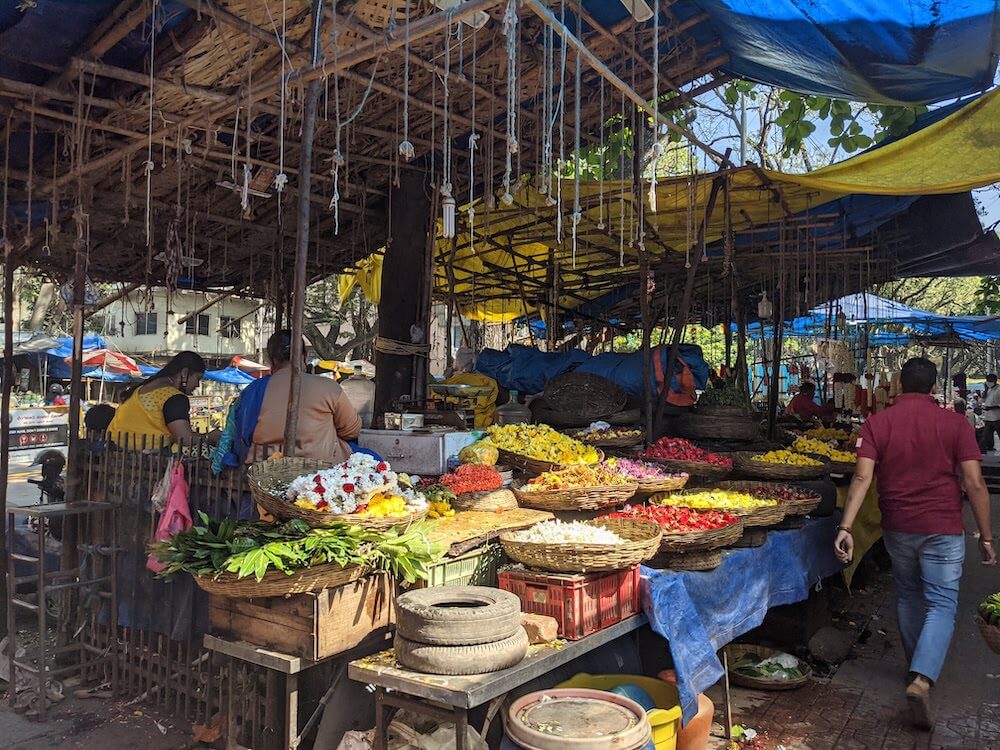
Some of the other best visiting places in Karnataka are Manchinbele dam, Savandurga hill, and Channapatna town popular for toys. A few coastal places on my list are Udupi, Mangalore, and Murudeshwar. Bandipur, Kabini, and Nagarhole National Park are some more national reserves I haven’t seen. More historic temples are found at Pattadakal, Badami, and Aihole. There is the Nrityagram dance village and Yelahanka weavers, just to name a couple of artists and artisans of the state. And then the area has infinite possibilities for drives and hikes to be done.
I realize that even after wandering around Karnataka for months I may have only touched it slightly. We can keep talking about the Karnataka attractions but the more we see the longer the list seems to become. Let’s get on then for we have further to go.
This pine plantation under which I’m sitting (and writing this piece) near my guesthouse in Chindi village is quite young. With the loud wind, the pine supporting my back sways too. First I felt an earthquake was coming because everything shook. But I guess it was just the pine doing la-la-la-la-la.
Languages Spoken in Karnataka
The official language of the state is Kannada and about 70 percent population of Karnataka speaks Kannada. But the state has some 50 tribal languages and 22 scheduled languages in the state. Other major languages spoken are Urdu (9.72%), Telugu (8.34%), Marathi (3.95%), Tamil (3.82%), Malayalam (1.69%), Tulu (3.38%), and Hindi (1.87%).
Yes, India is a bit crazy when it comes to languages.
Given neither my out-of-the-station friends nor I speak Kannada, we found it hard to communicate in villages and rural Karnataka. Even in urban setups, a lot of locals don’t speak English. We had difficulty coordinating with cab drivers, bus drivers, local shops, and even fancy tourist places.
You may find yourself stepping down into a cave in Kolar and your guide may not understand you feel claustrophobic. Or no matter how much you tell your cleaning lady you were asleep when she had rung the bell, she may not understand. And you won’t be able to figure out that it was not the cab driver’s fault he took the route he did.
But we survived, and we survived joyously.
While traveling you won’t have a language problem in designated Karnataka tourist destinations and hotels at major travel spots. But as soon as you venture out of the known travel trail, get ready to use hand gestures to communicate.
Pro travel tip for a long trip in Karnataka — Download offline Kannada language file and use the Google translate application. Its voice feature works wonders.
Weather in Karnataka (What are the best times for visiting places in Karnataka)
Karnataka is a Southern state of India. It gets hot during most parts of the year. But as the state is cradled by the Western ghat mountains on the west side, the temperature of those hilly regions mostly stays low. The long coast of Karnataka gets humid and sultry for the entire year as well.
The capital Bangalore with an elevation of 920 meters enjoys pleasant weather during the entire year except for March and April when it gets considerably hot and dry.
Central Bangalore has similar weather to central and northern states of India except the minimum temperature there only falls to 10 degrees versus 3-4 degrees in the Northern Indian plateau.
Given the diverse climate, some parts of Karnataka can always be visited. So we traveled to the hilly regions of Coorg and Chikmagalur in the summer months of June and July when these coffee estates receive heavy rainfall. And central Karnataka was best-visited post-monsoon to February. Coastal towns are also pleasant from October to February.
Every part of Karnataka will have a different best time to visit, and I have talked about those in the individual destinations above.
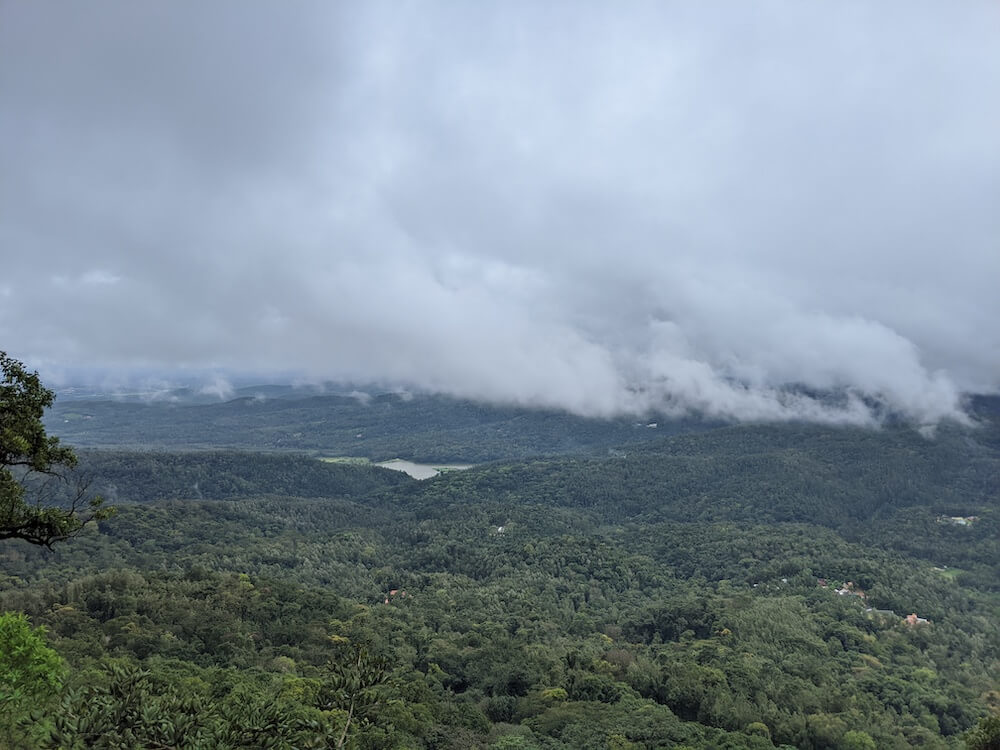
Karnataka Food – My Most Important Reason to Travel to Karnataka
Karnataka food would be a new and enthralling experience for someone who has not eaten in any of the South Indian states. Here dosa, idli, vada, rice, millets, and bananas are a staple.
I have written an extensive piece on the dosas of Karnataka. And apart from these crunchy companions, jowar (sorghum) roti meals, bonda soups, idli plates, non-vegetarian delicacies, seafood, and a plethora of rice preparations are common too. Chapati is eaten less, and sweets are rice-based too.
I will only be able to do justice to Karnataka food in a separate article dedicated to the cuisine itself. So for now please be happy with these places to eat in Bangalore and the dosa article above. The food write-up will be sent your way soon.
Enjoy these pictures of the food of Karnataka.
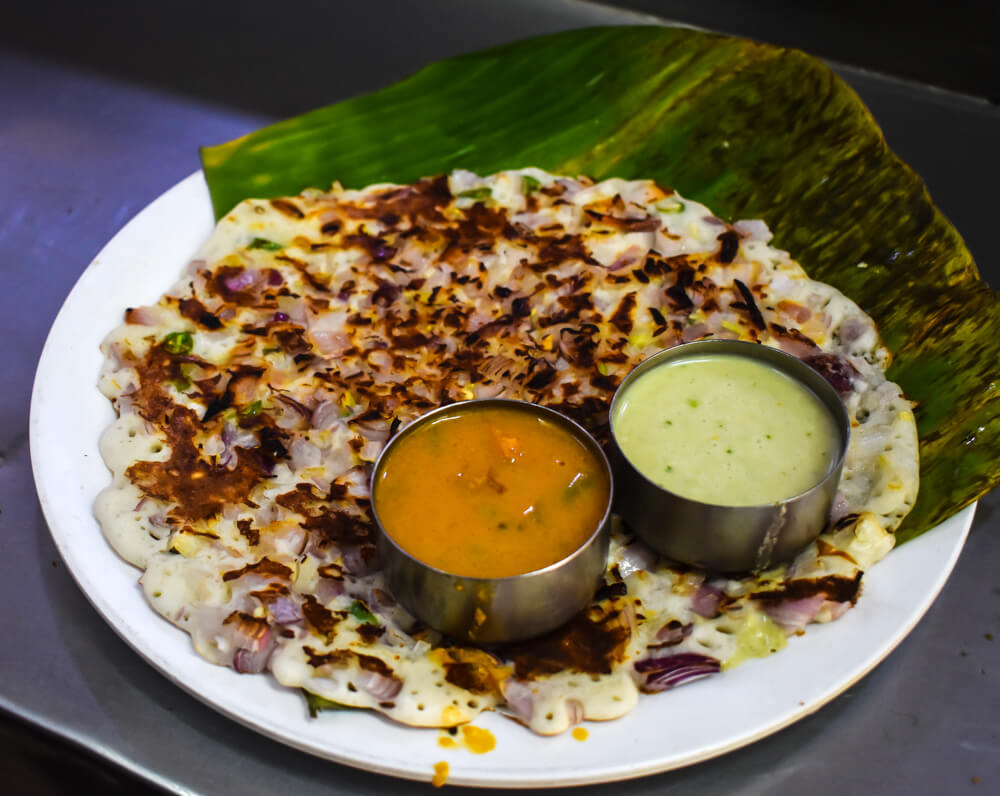
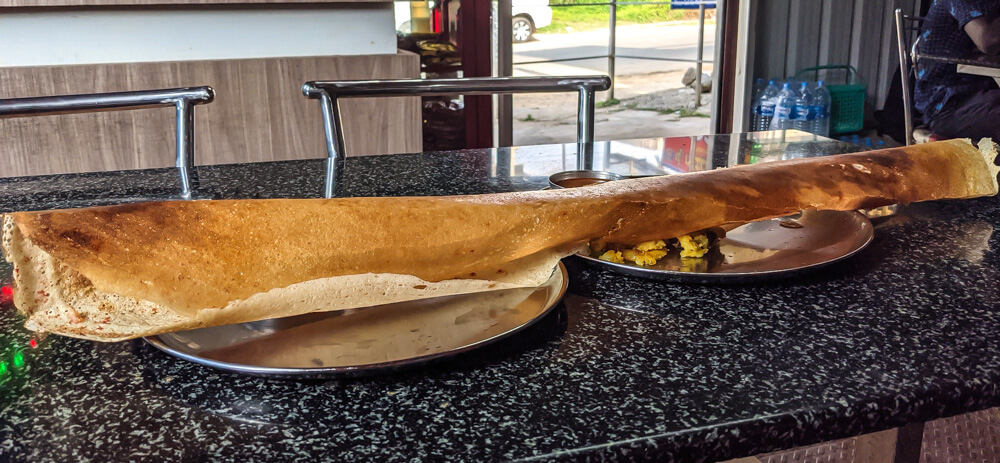
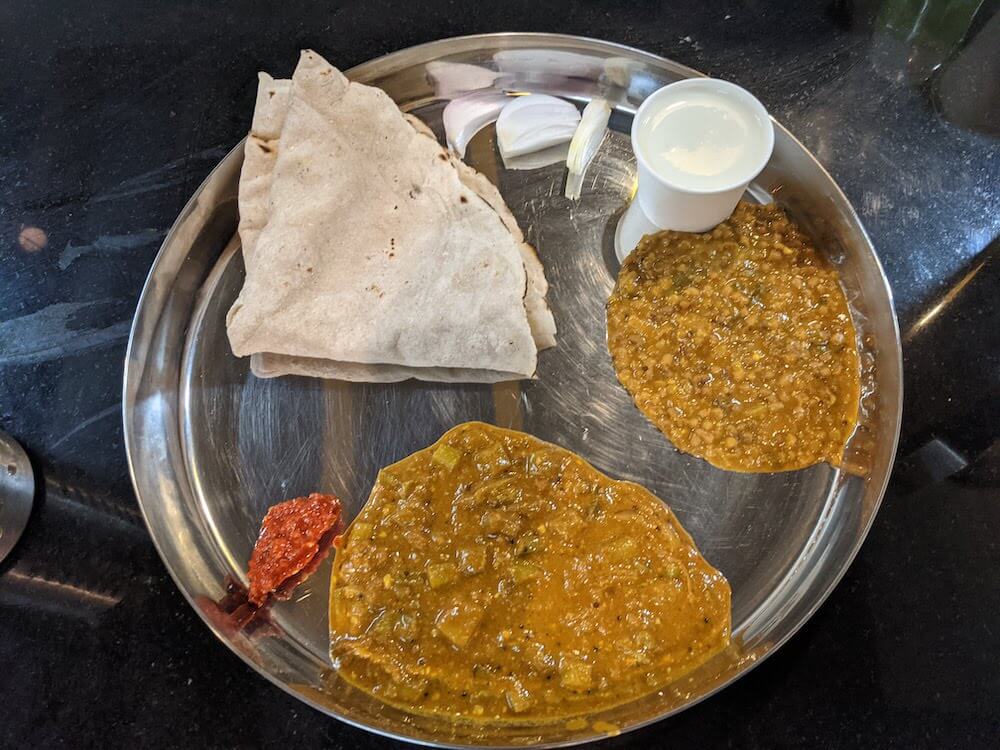
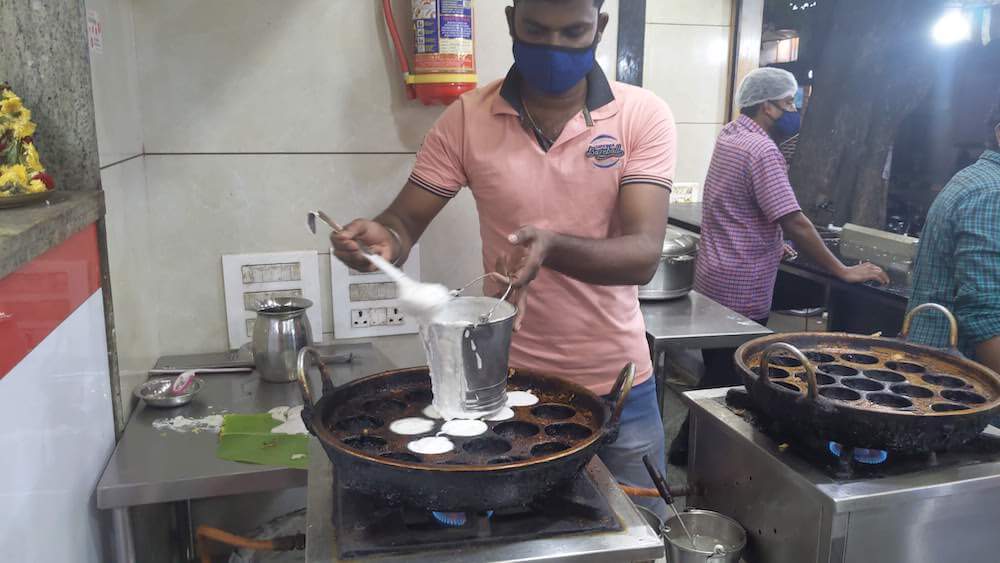
How to Travel Around the Various Karnataka Destinations? Transport in Karnataka.
Karnataka is well-connected by road. Buses and trains cover large parts of the state. Sometimes one may have to change many buses to reach their destination. But you can’t reach everywhere by public transport in Karnataka. Only a car can drive to remote valleys and obscure places. That’s why booking chauffeur-driven cabs is also common in Karnataka. Earlier we used to hire private taxis but now Ola and Uber also run intrastate travel cabs. A quick Google search bring up taxi numbers and call a few to check for prices and service quality.
Having said that, Redbus is a good website to book buses and this Indian railway government site is helpful to find train schedules and IRCTC for getting train tickets. Hitchhiking also works in Karnataka but make sure you are not alone and preferably find a family car to join in.
Flights connect only some major cities such as Mysore, Bangalore, Mangalore, Hubli, and Belgaum. Beyond these big cities, air connectivity is low in Karnataka. (Though several new domestic airports are coming up.)
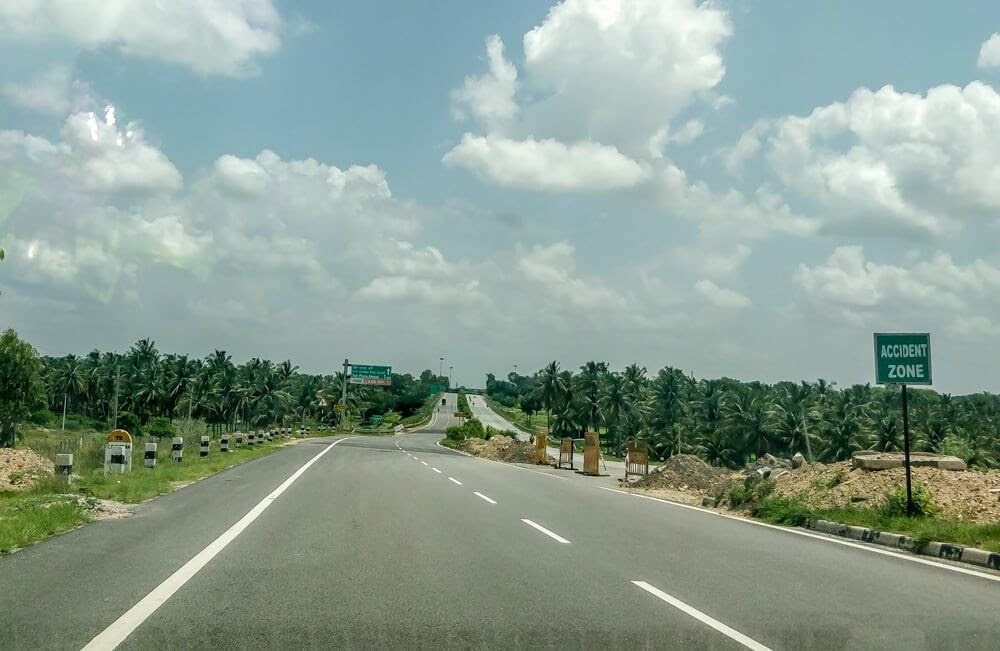
Now to Travel Safety in Karnataka
Karnataka is considered a pretty safe state. Well, at least that is the response you will get from someone like me who has come from Uttar Pradesh and spent a lot of time in Rajasthan, Delhi, and other Northern areas.
If we go by the Wikipedia list of Indian states by crime, Karnataka is number 14 with 250 crimes per .1 million people. But the same statistics present Uttar Pradesh’s crime records to be 262 per .1 million too. I don’t know how much should I trust this list.
In Bangalore, one can be out and about until late at night. But if you are a solo woman traveler, avoid getting out at night. During the day all roads and streets are fine. In a group, of course, you are even good at night.
Traveling on the road in your vehicle at any hour is perfectly okay in Karnataka. Roads are pretty nice, and no one will bother you. If you use public transport, reserve seats in air-conditioned buses (for night travel) and feel free to choose any kind of bus for day travel. For trains, third-class air-conditioned coaches will ensure a safe journey. In the general compartments of the trains, woman travelers can get some unwanted attention, especially if traveling alone. So try the air-conditioned compartments. But during the day mostly everything is fine.
Hitchhiking is also possible in Karnataka. Just make sure to get into a family car to avoid any mishaps. If you are getting into taxis alone, try getting a known driver through the help of your hotel or homestay hosts.
Even in most rural villages people are looking forward to helping and not take advantage of anyone’s situation. The language gap does pose a barrier, but one has to maneuver her way around.
I hope this helps.
All Karnataka Travel Articles
-
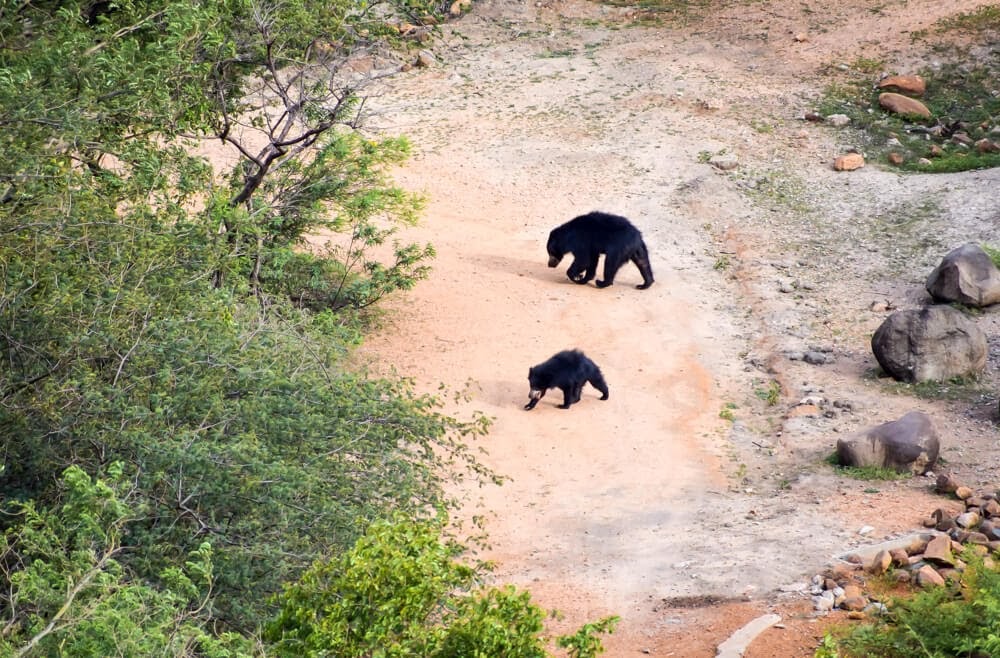
Finding Sloth Bears in Daroji Bear Sanctuary, Hampi
-
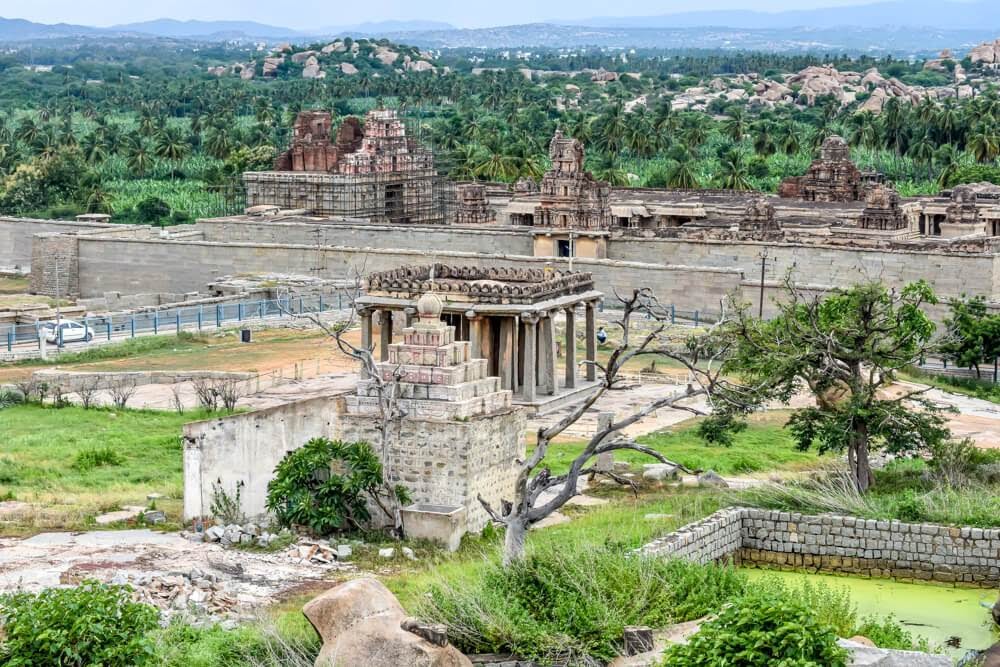
Timeless Places to See in Hampi, Karnataka – India’s Unforgettable Ruins
-
![A Road Trip From Bangalore to Coorg [Quintessential Karnataka] 4 A Road Trip From Bangalore to Coorg [Quintessential Karnataka]](https://www.onmycanvas.com/wp-content/uploads/2019/08/madikericoorgkarnatakasouthindia.jpeg)
A Road Trip From Bangalore to Coorg [Quintessential Karnataka]
-
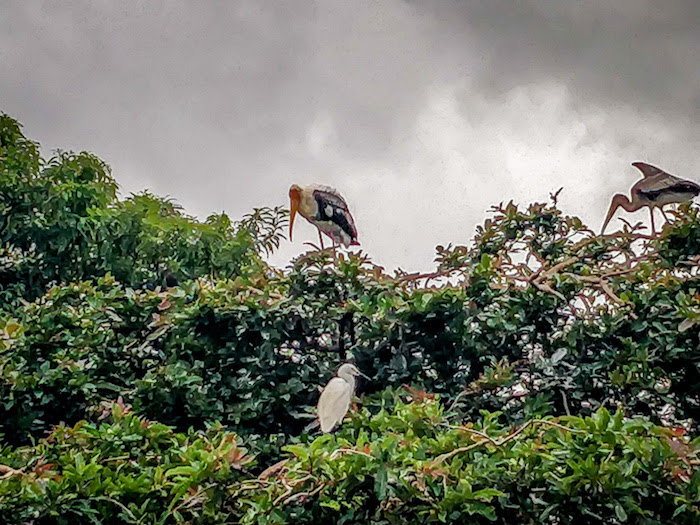
Ranganathittu Bird Sanctuary, Karnataka – A Day in the Winged Paradise
-
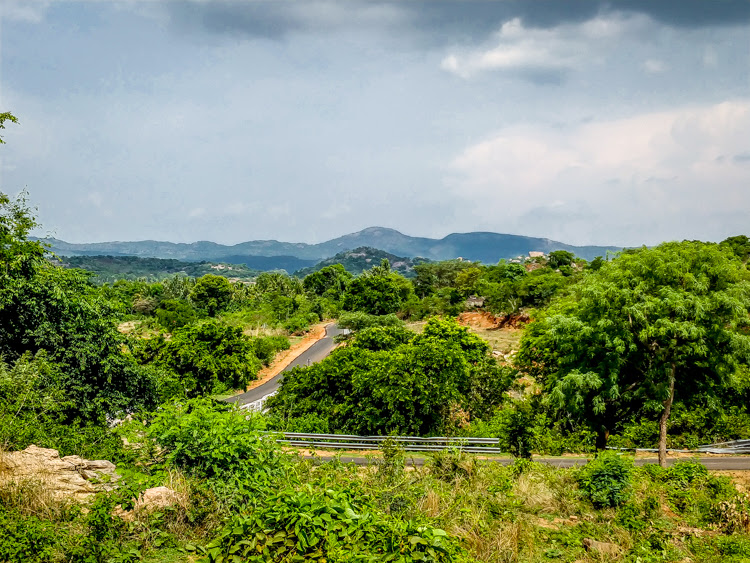
A One–Day Road Trip From Bangalore to Panchapalli Dam and Bettamugilalam Village
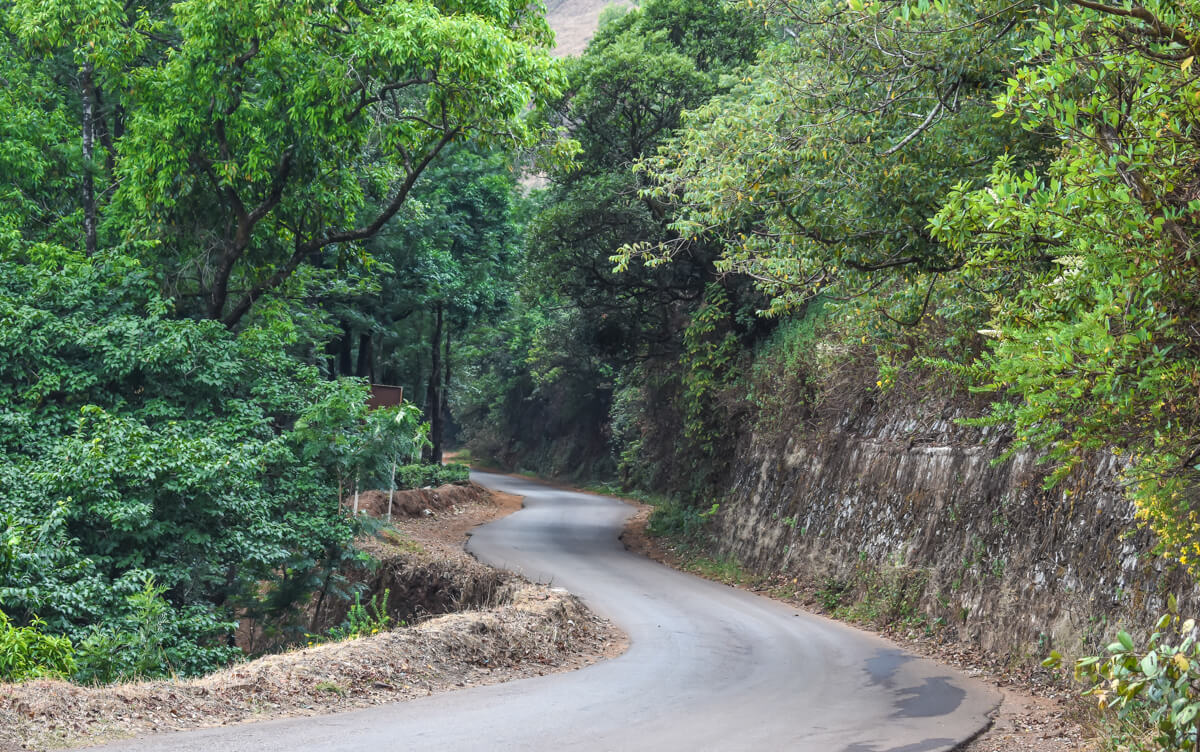
Did you like my Karnataka travel guide? What are some of your best places in Karnataka? Let me know in the comments.
*****
*****
Want similar inspiration and ideas in your inbox? Subscribe to my free weekly newsletter "Looking Inwards"!

